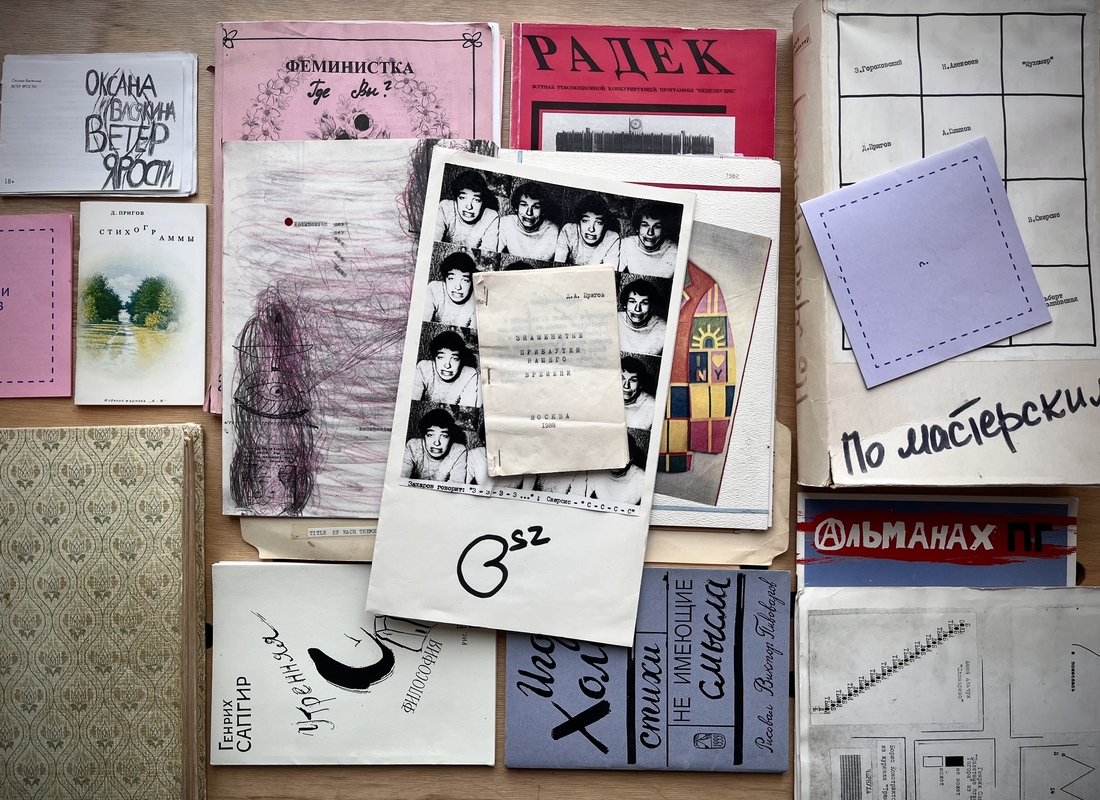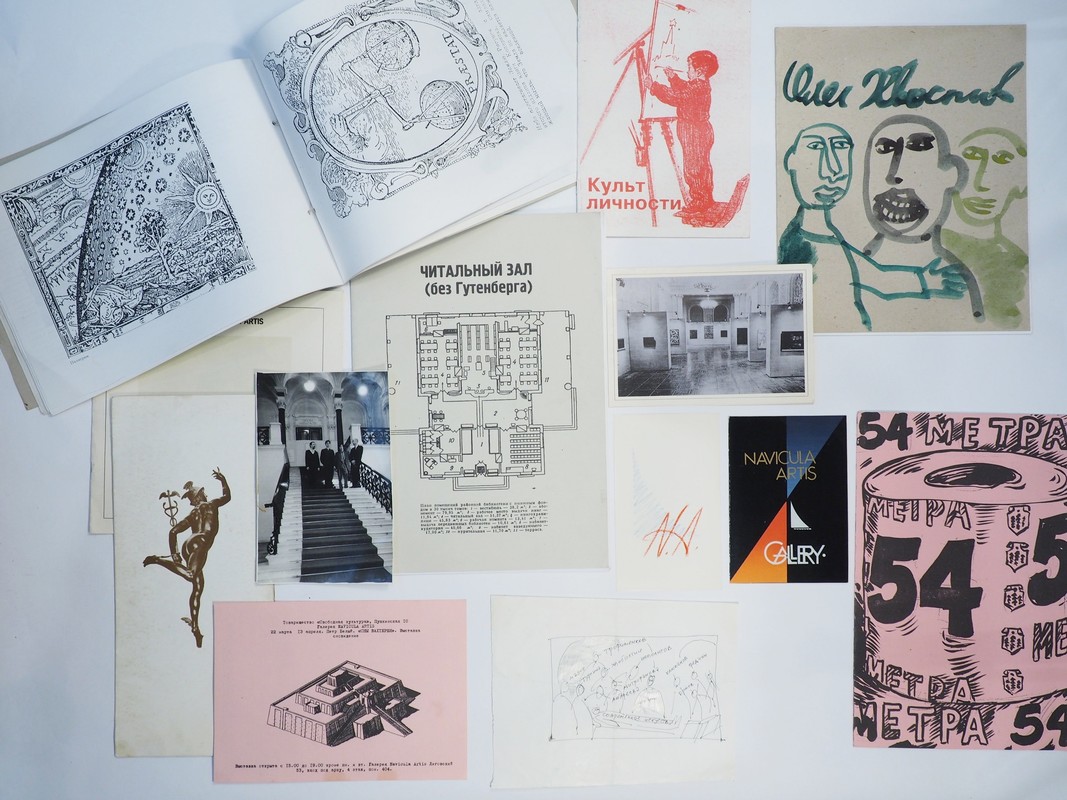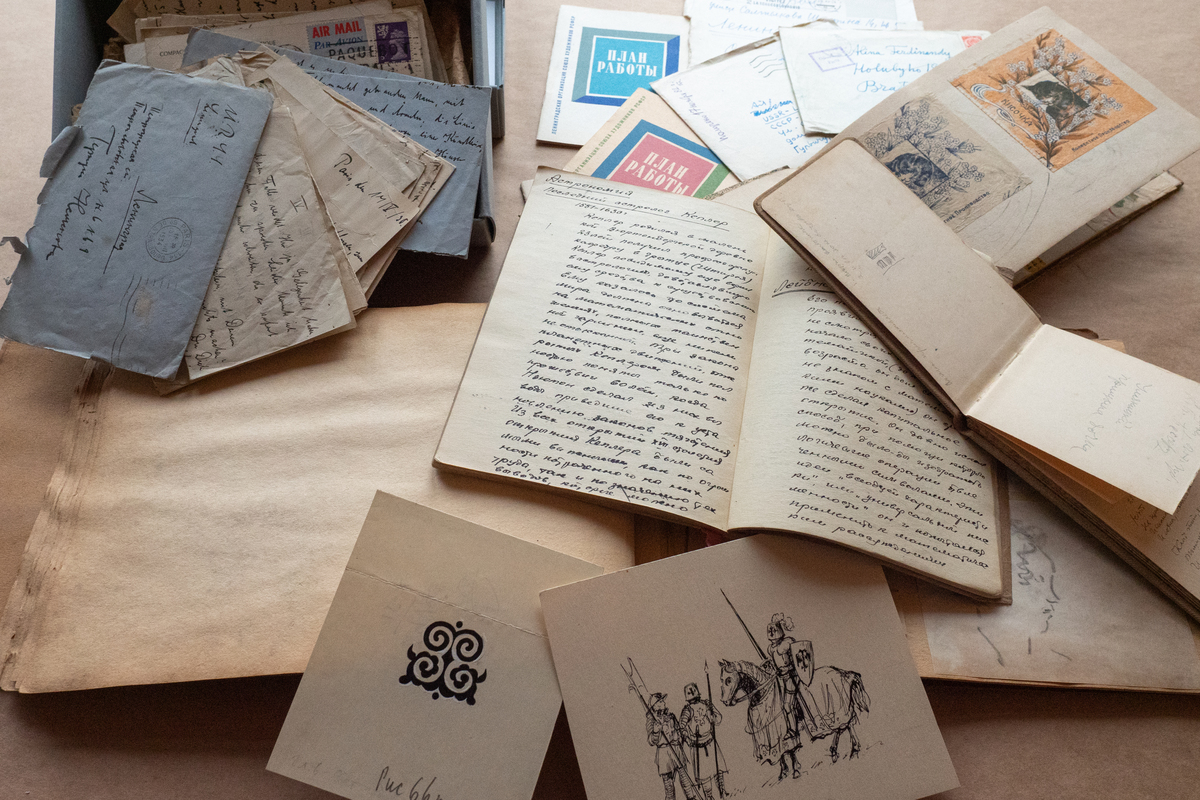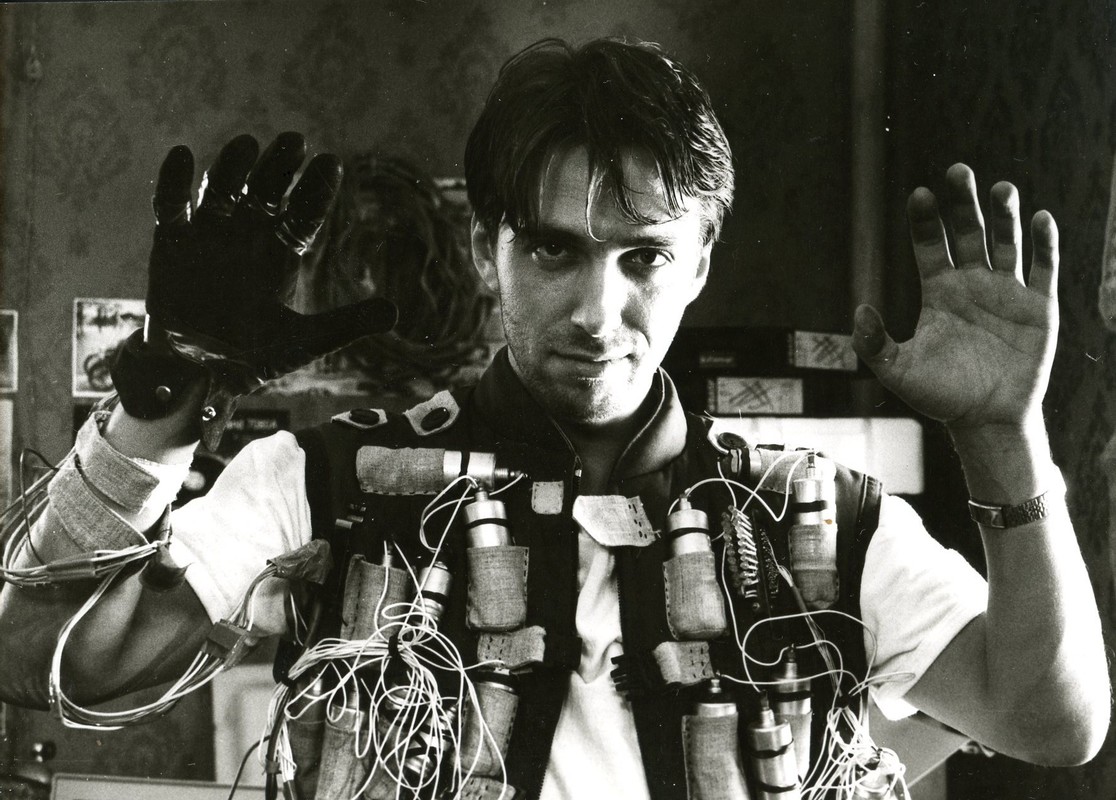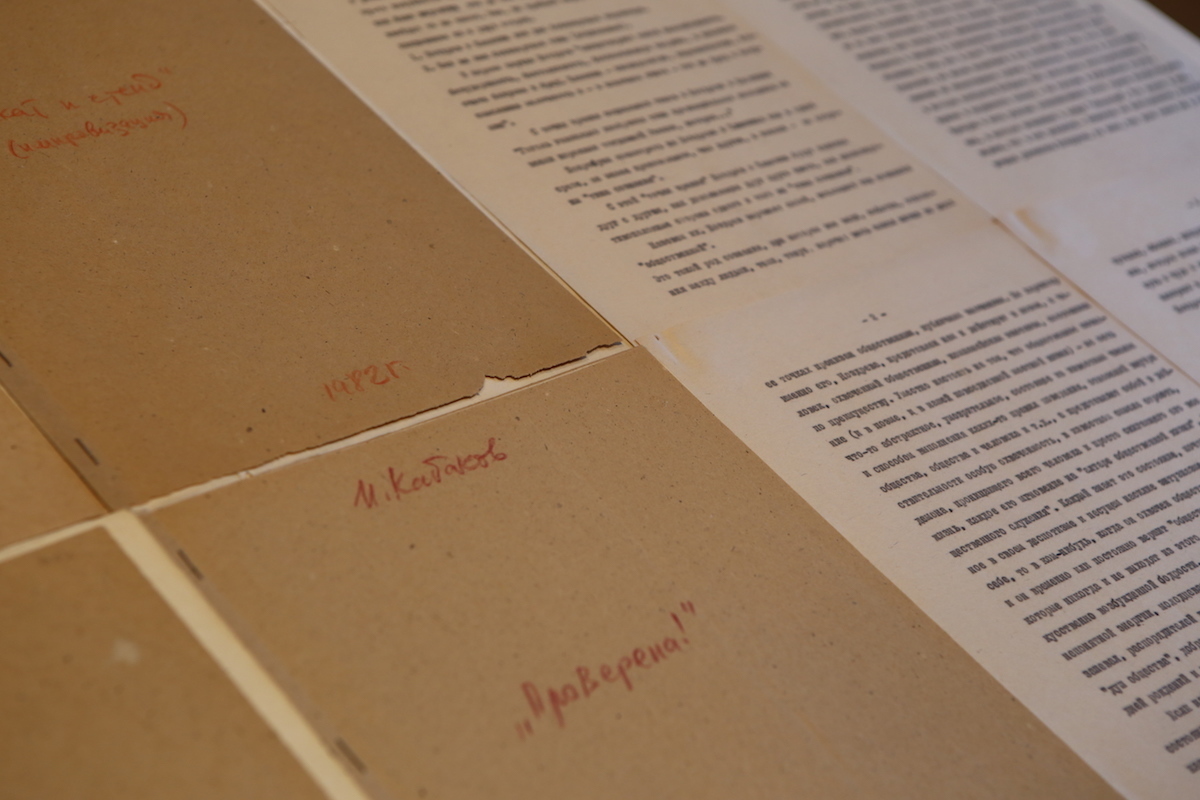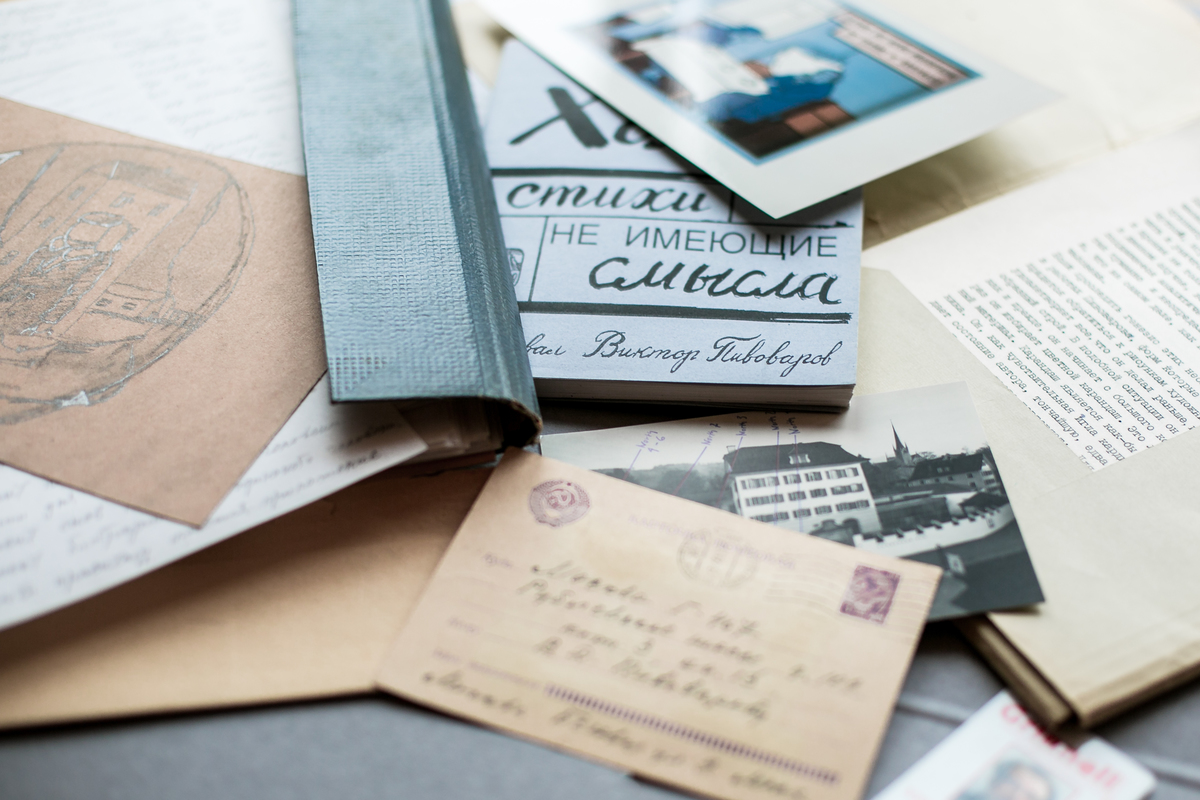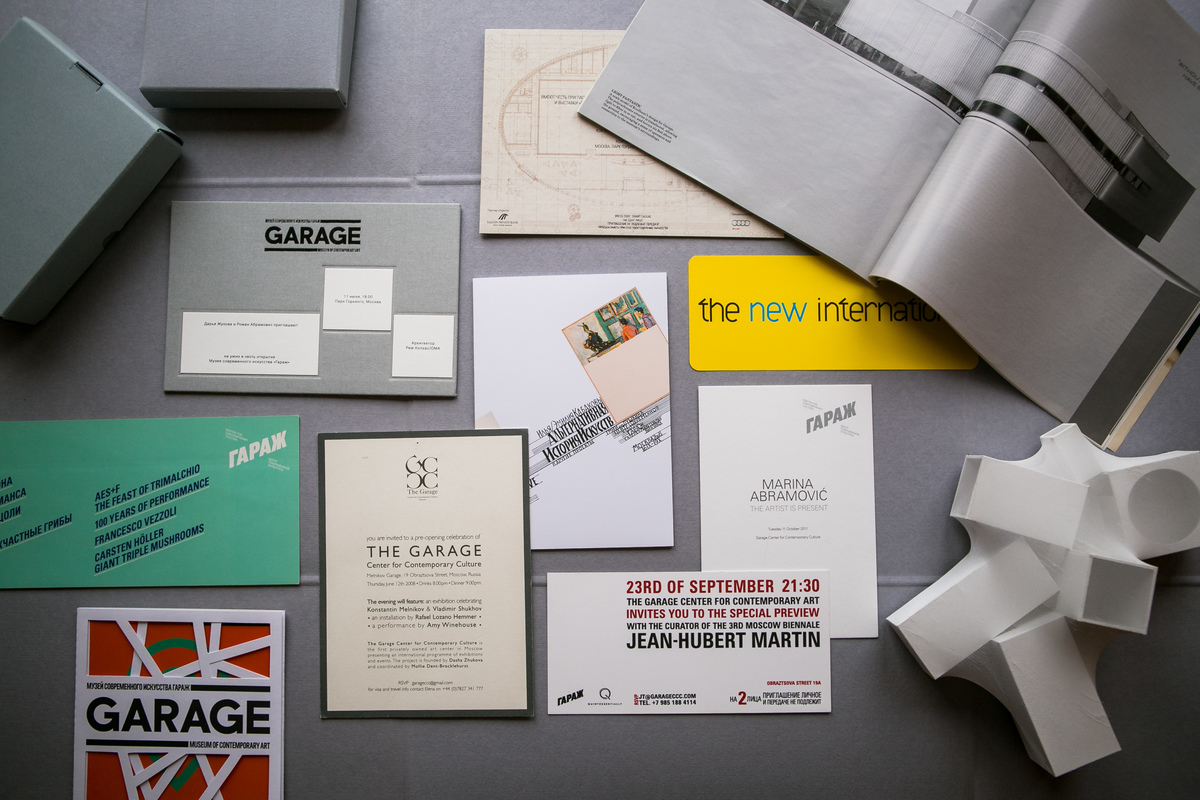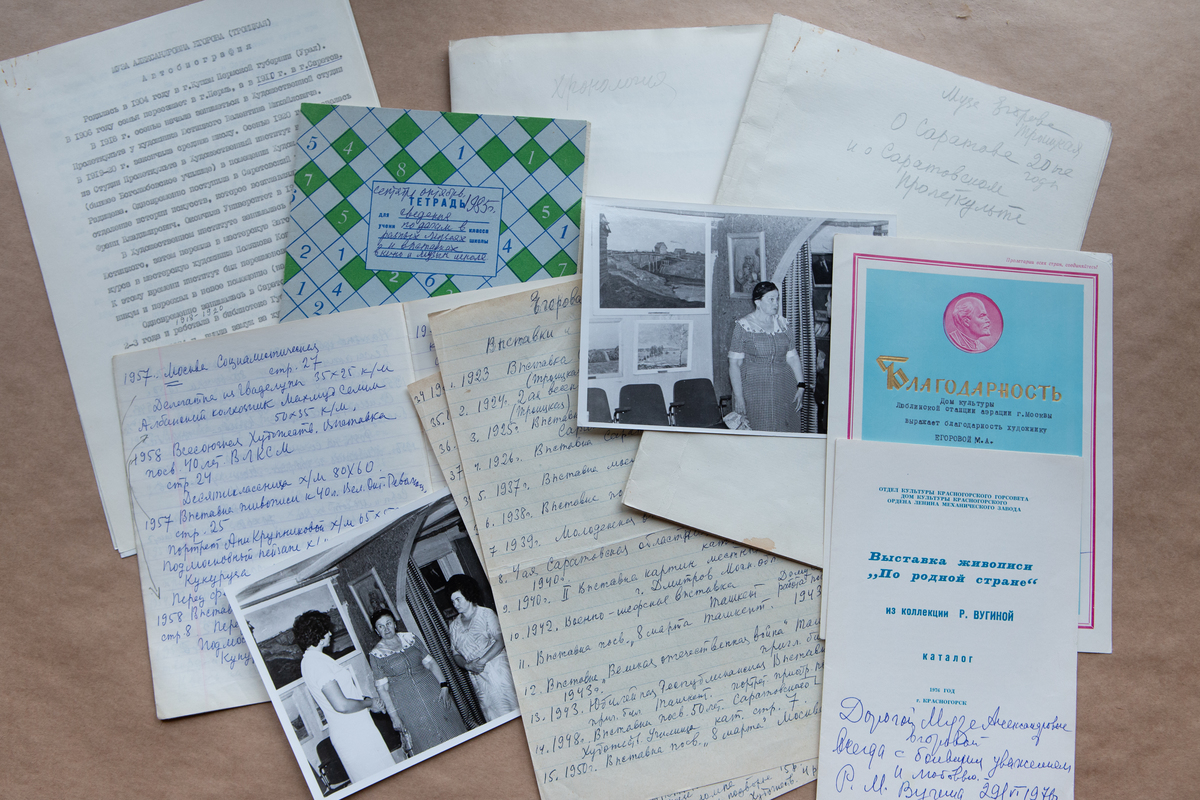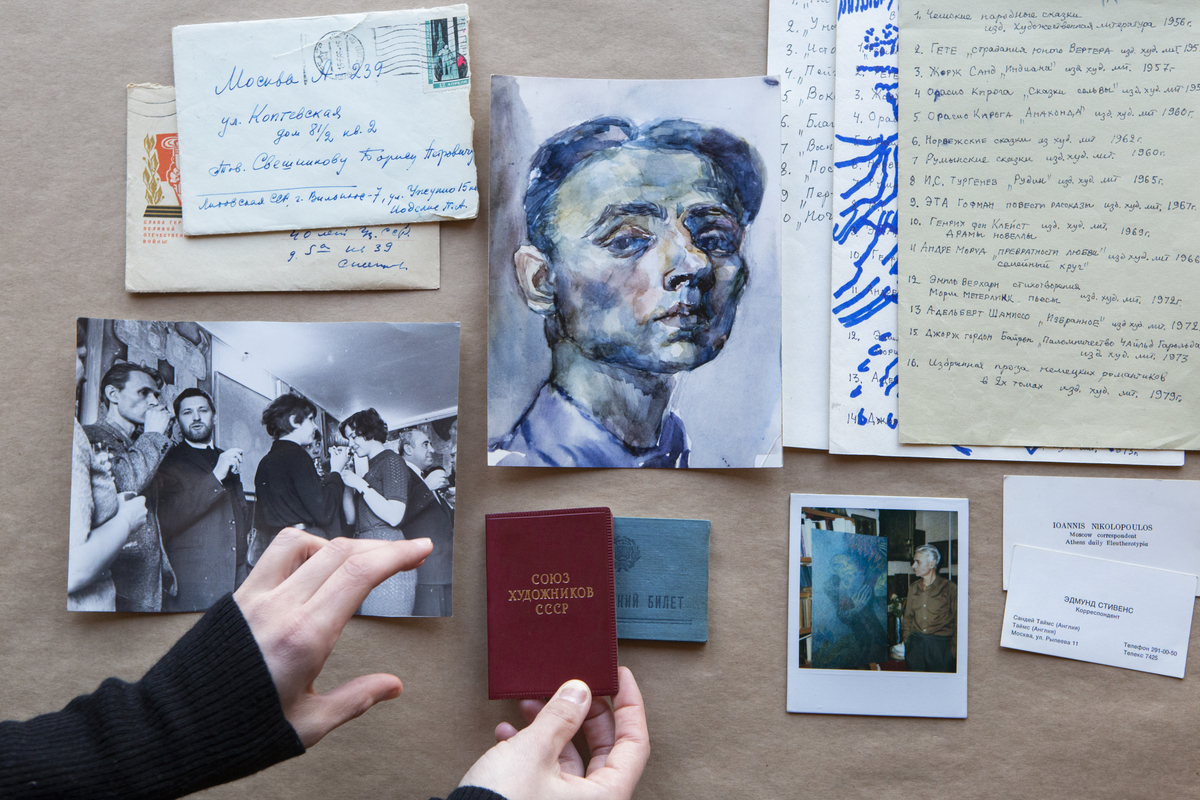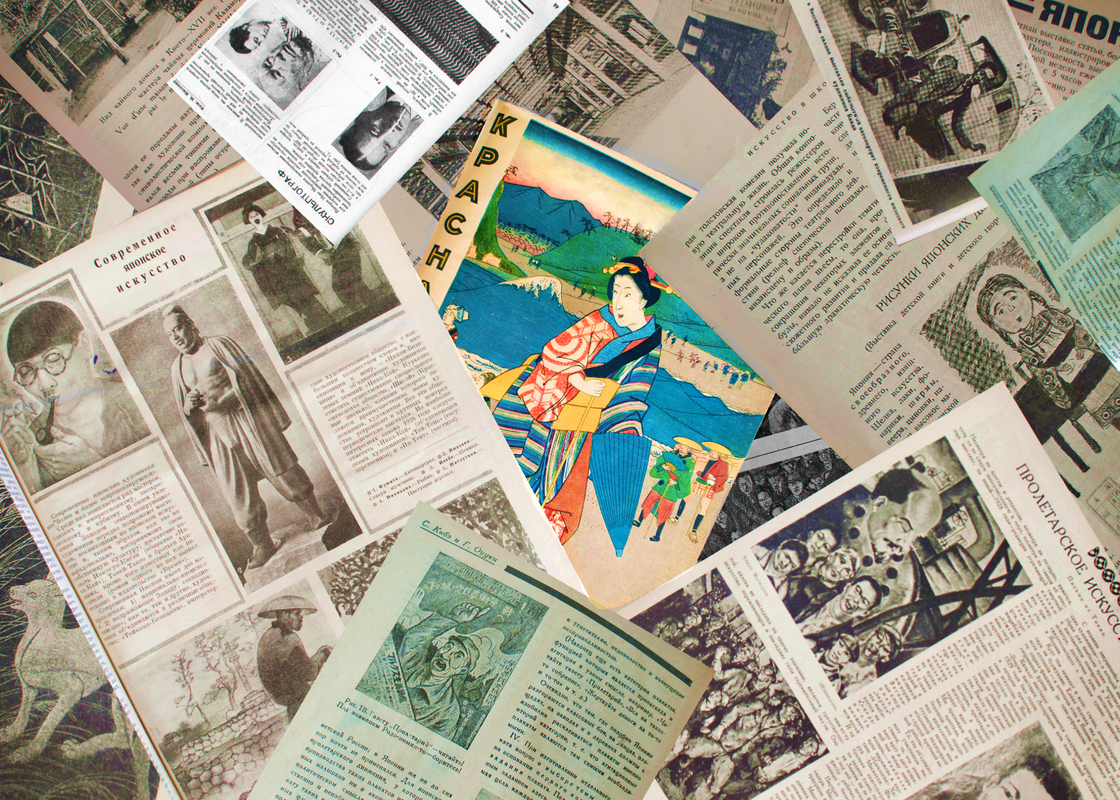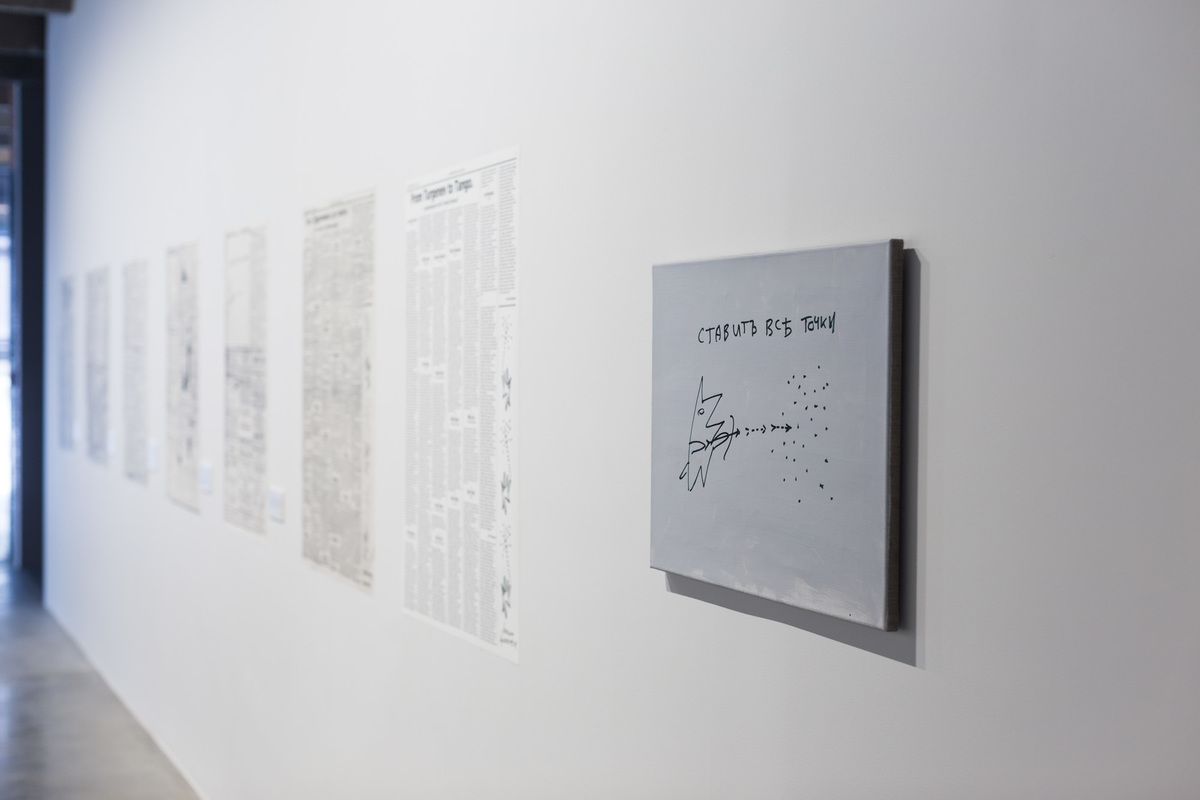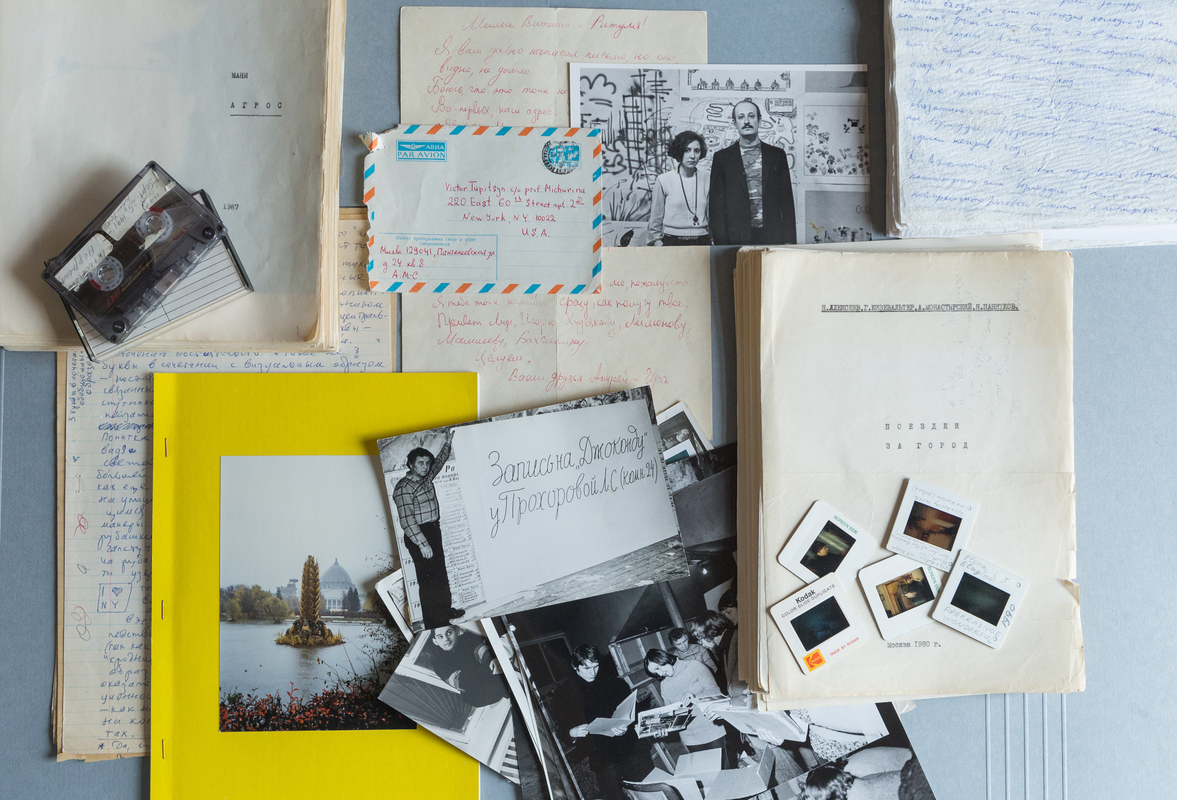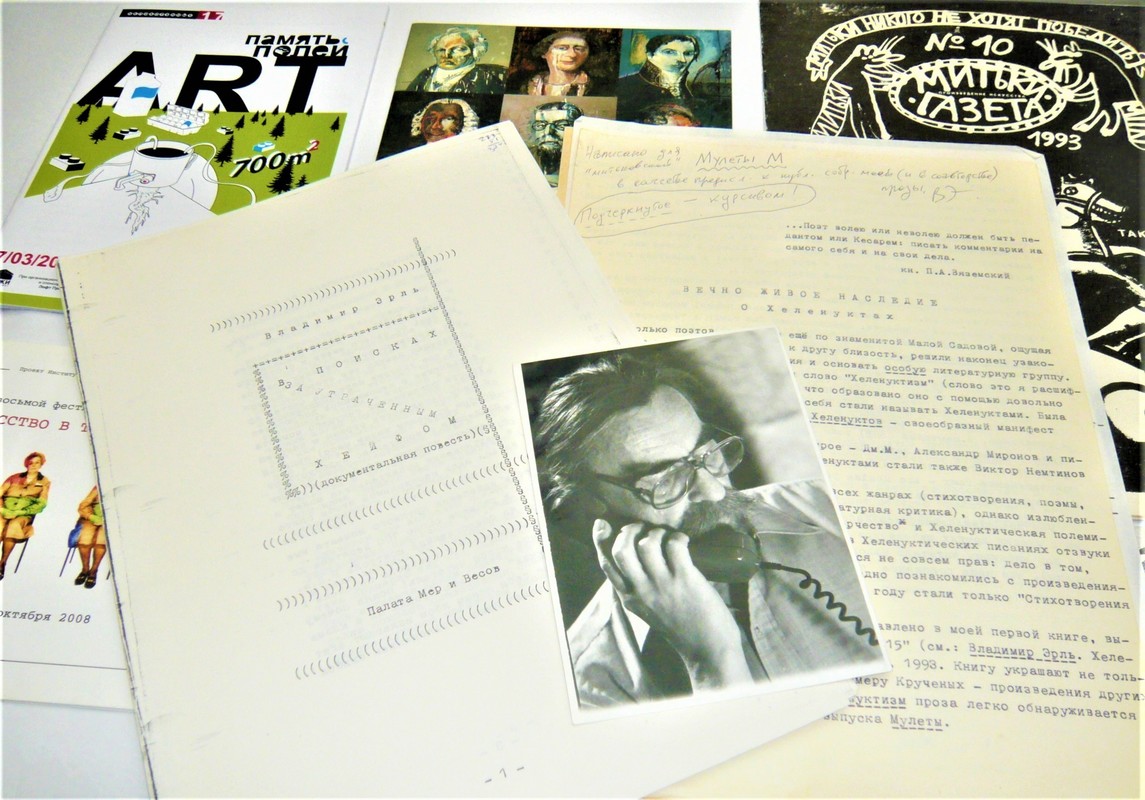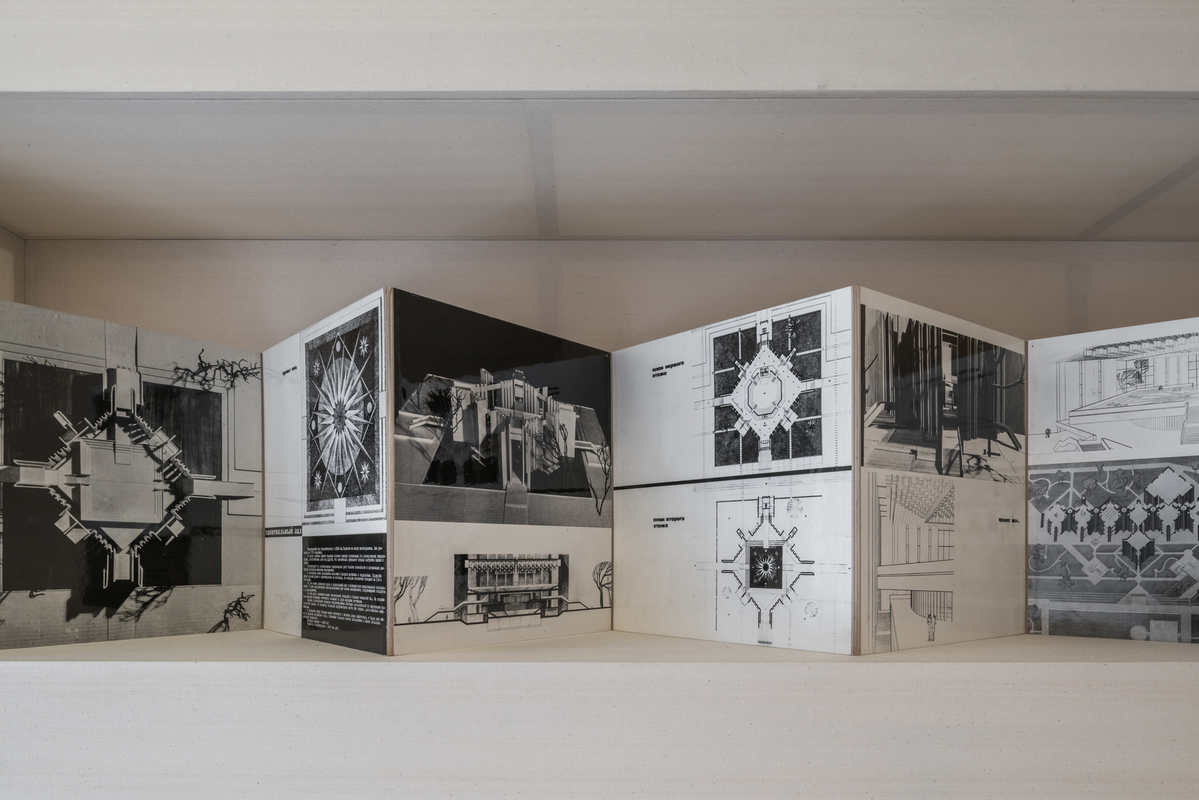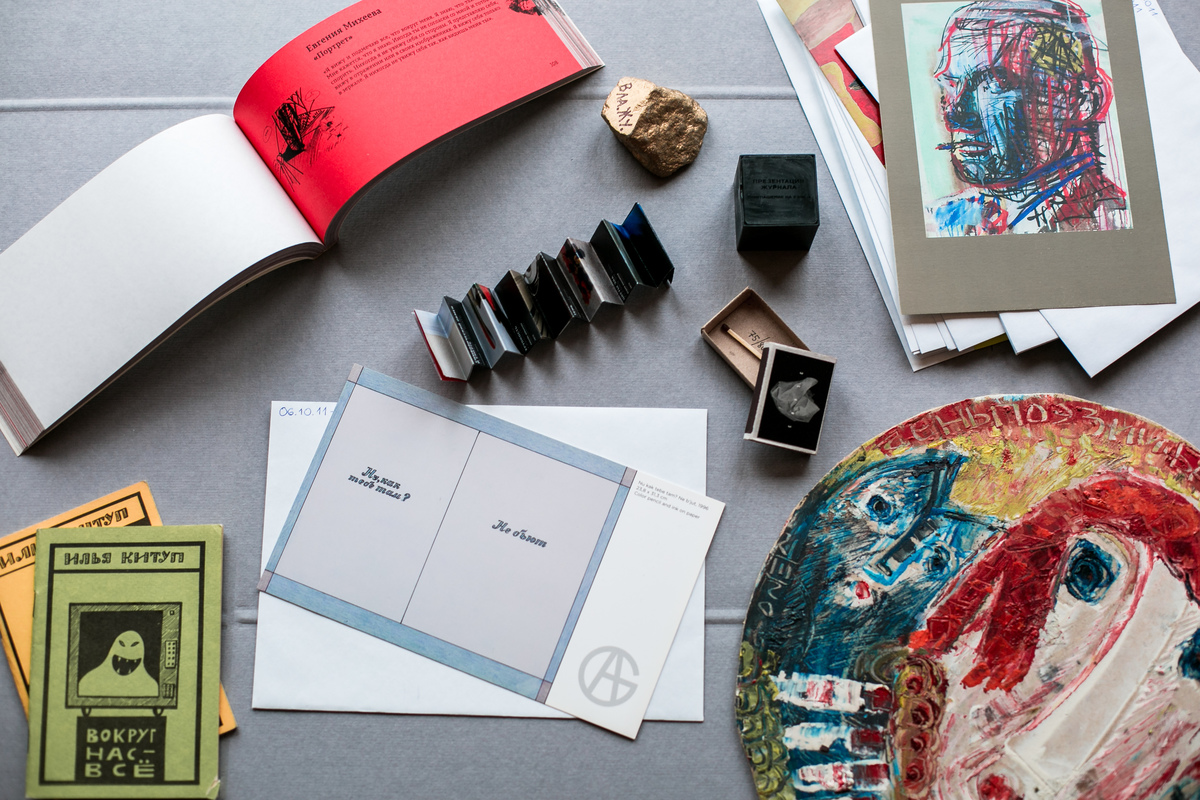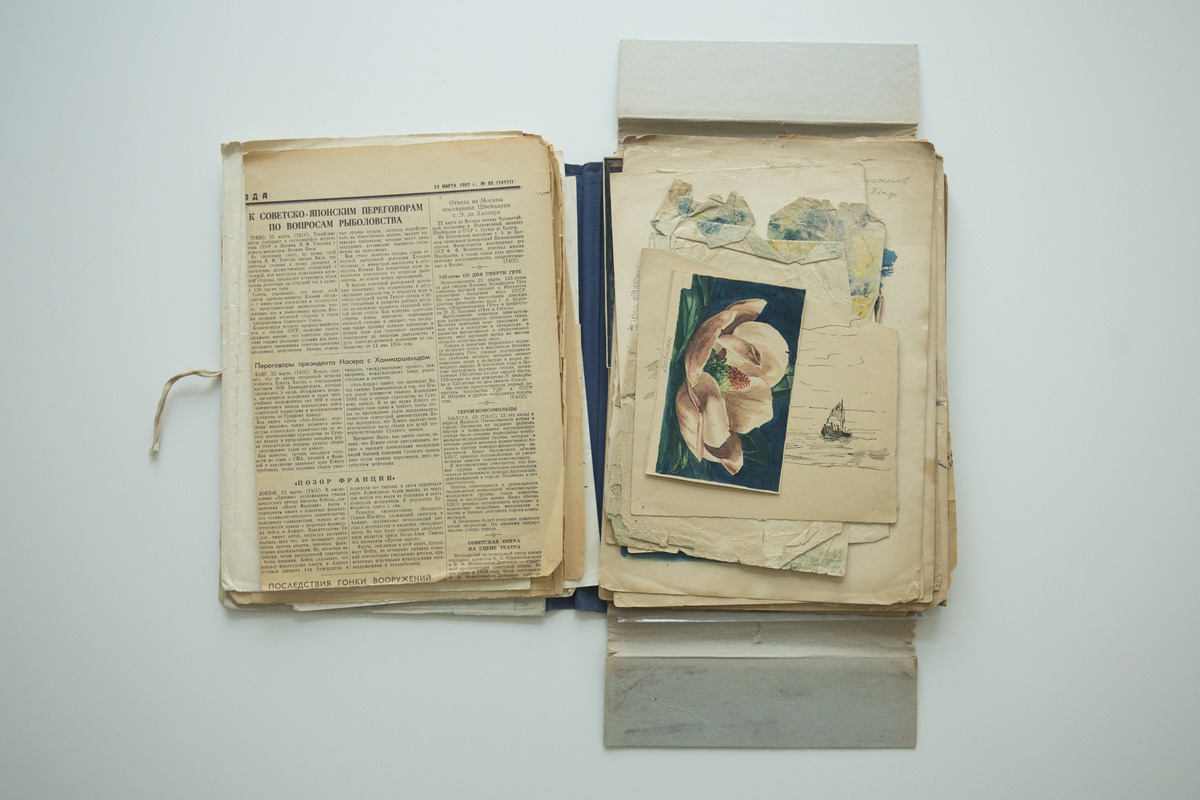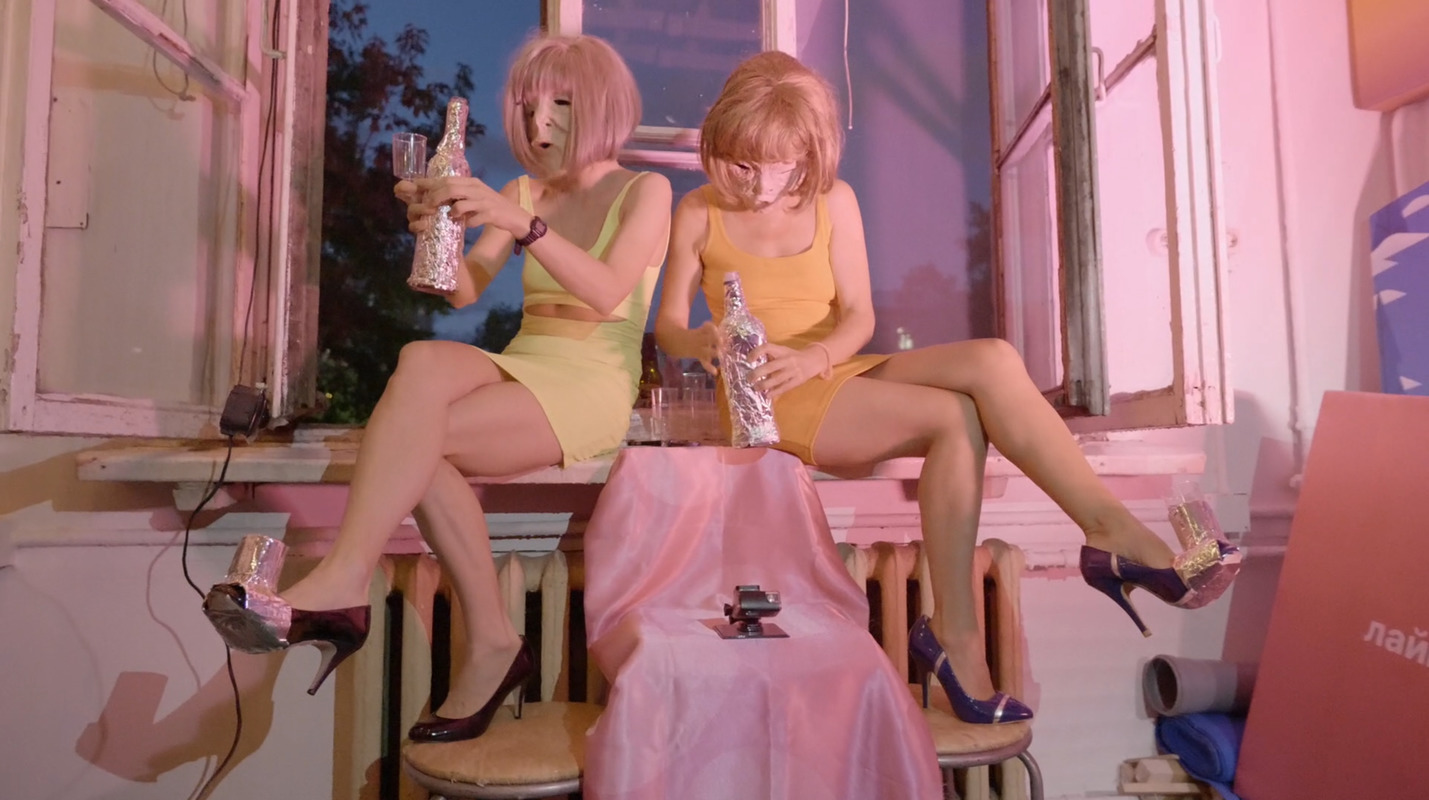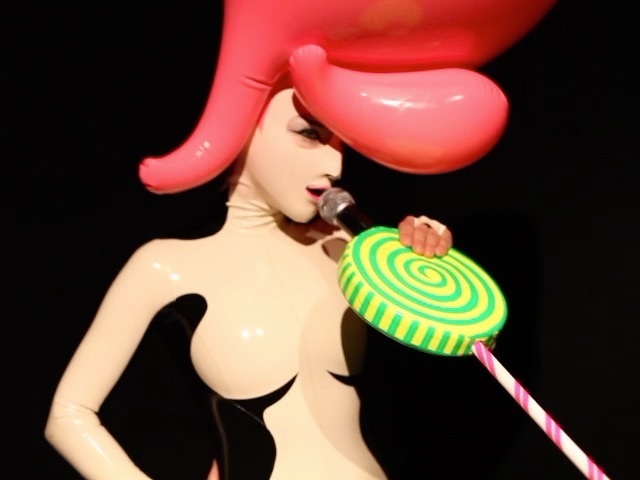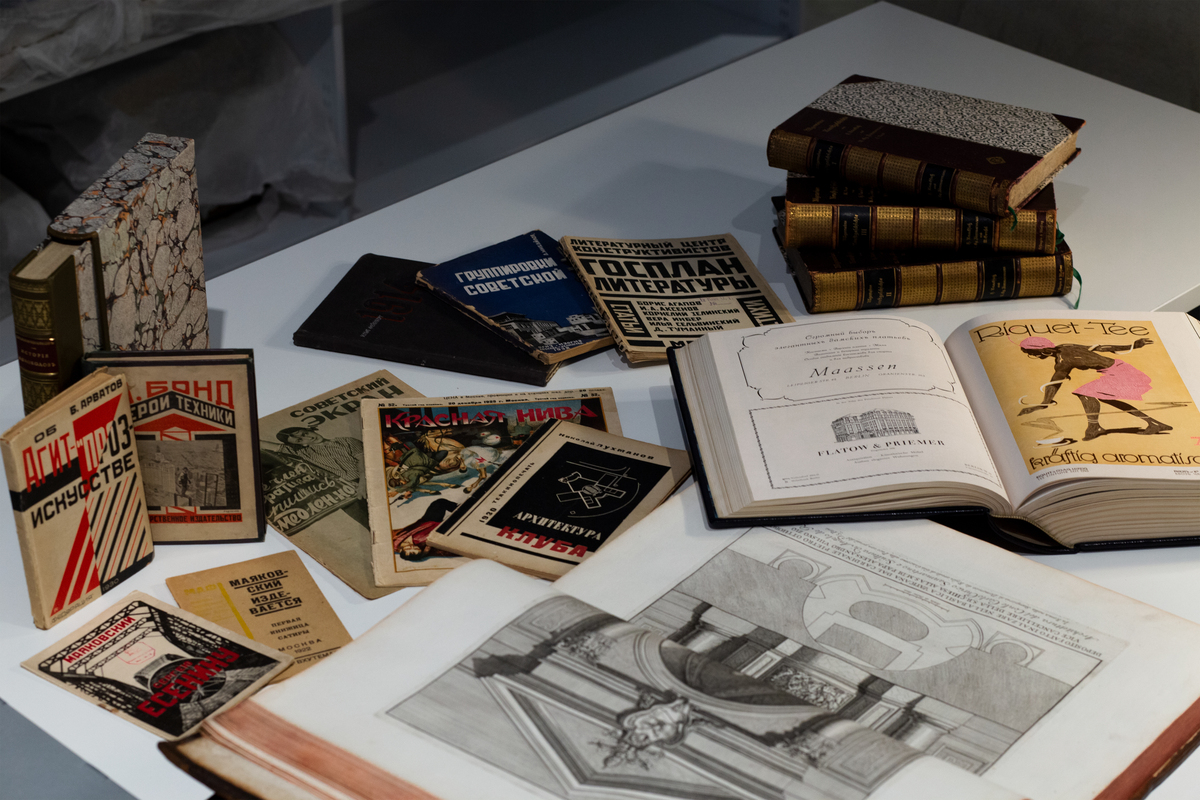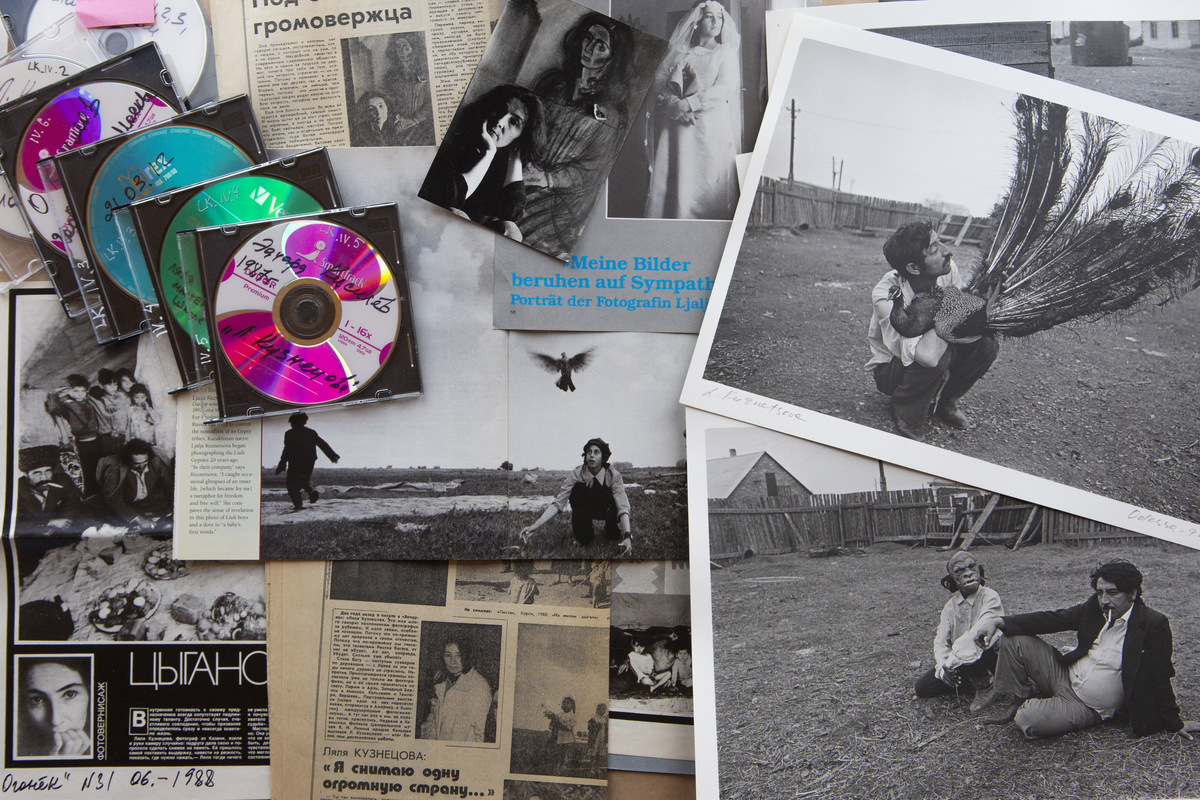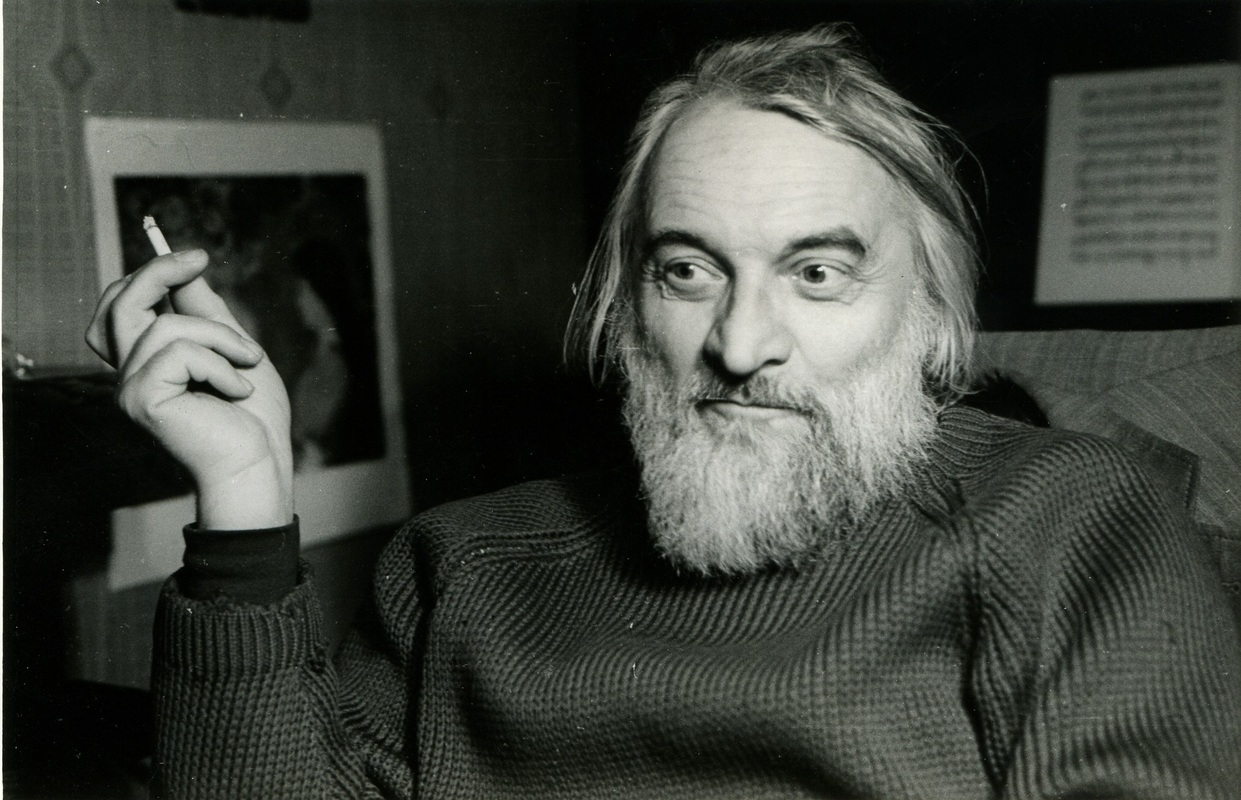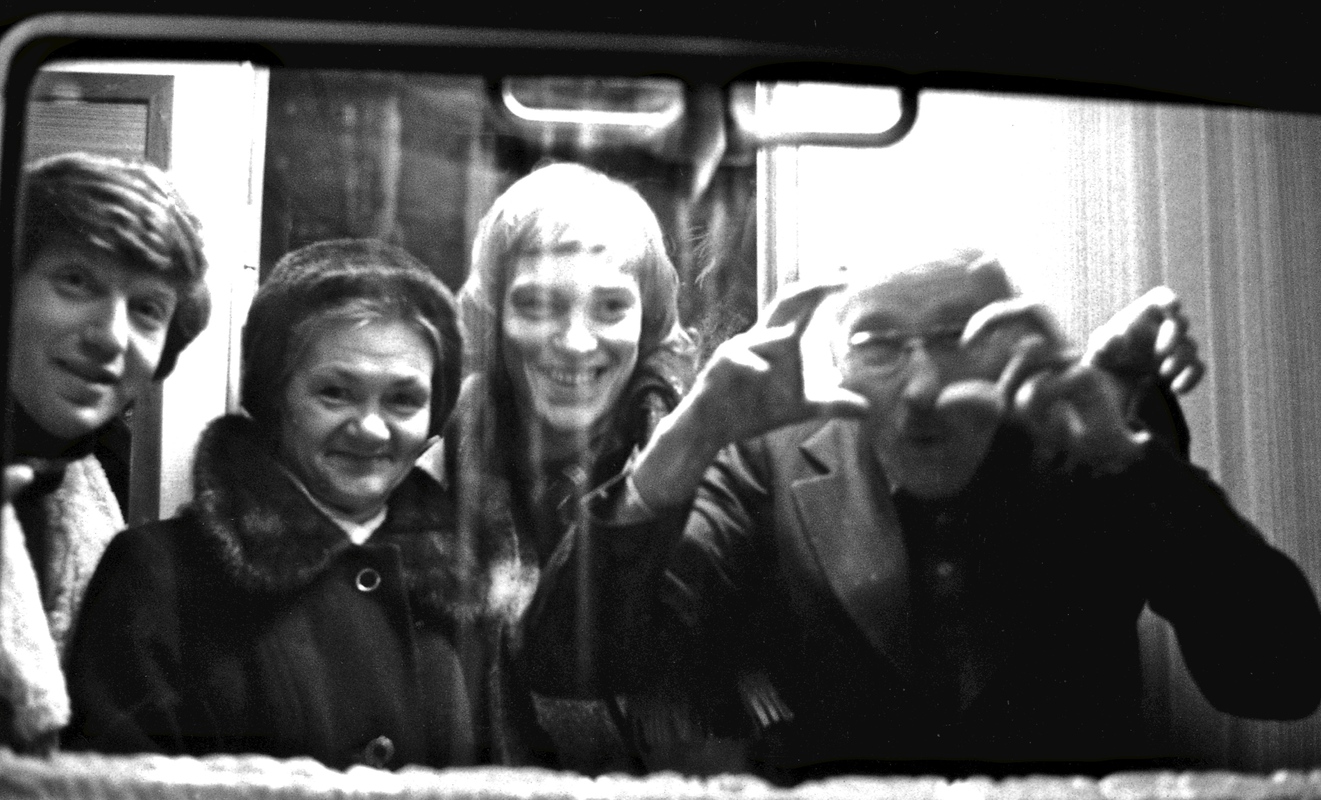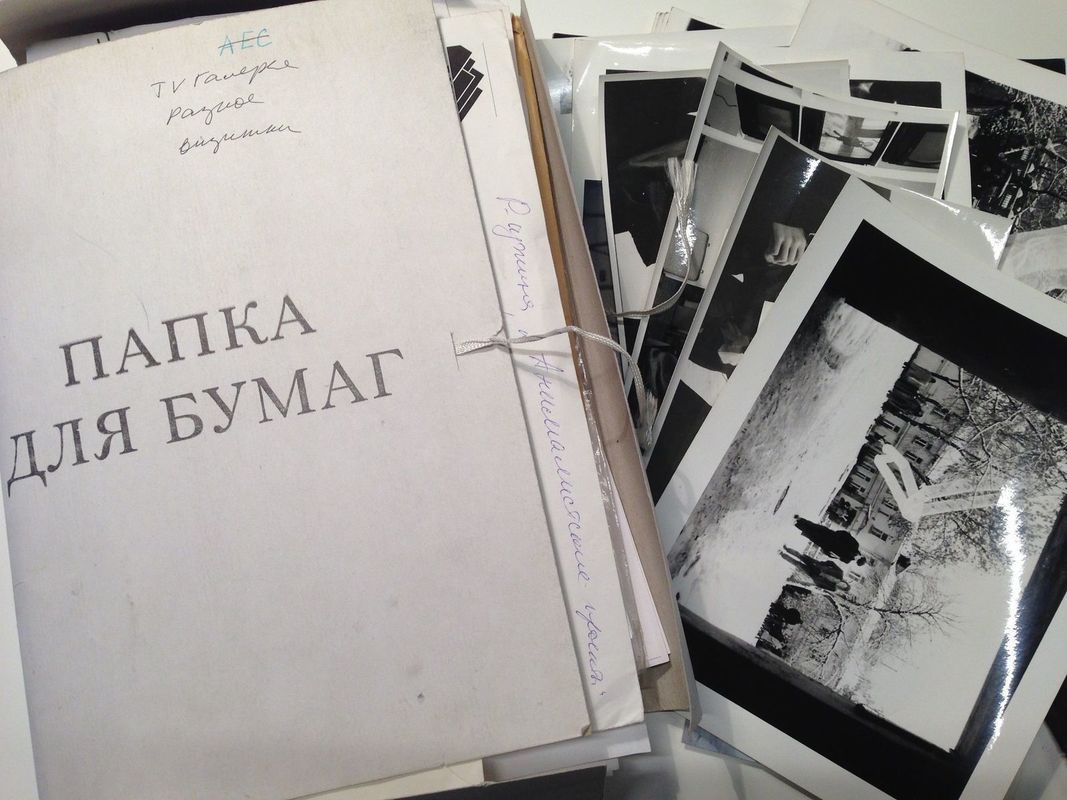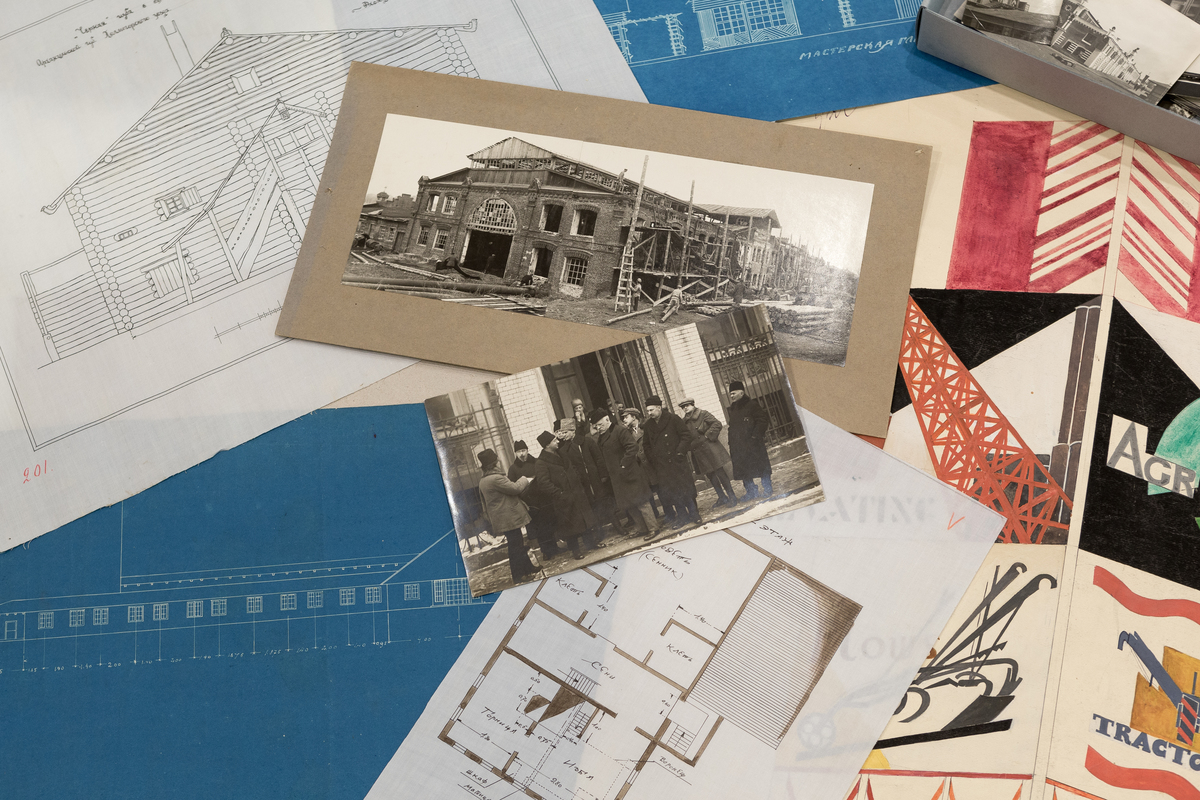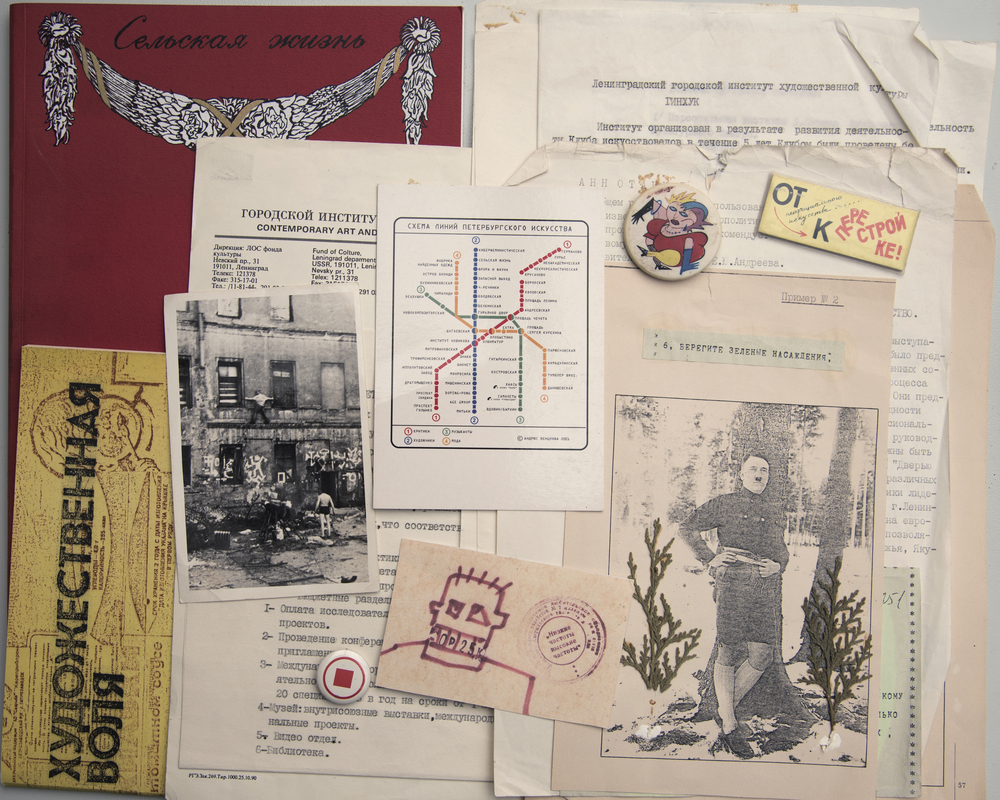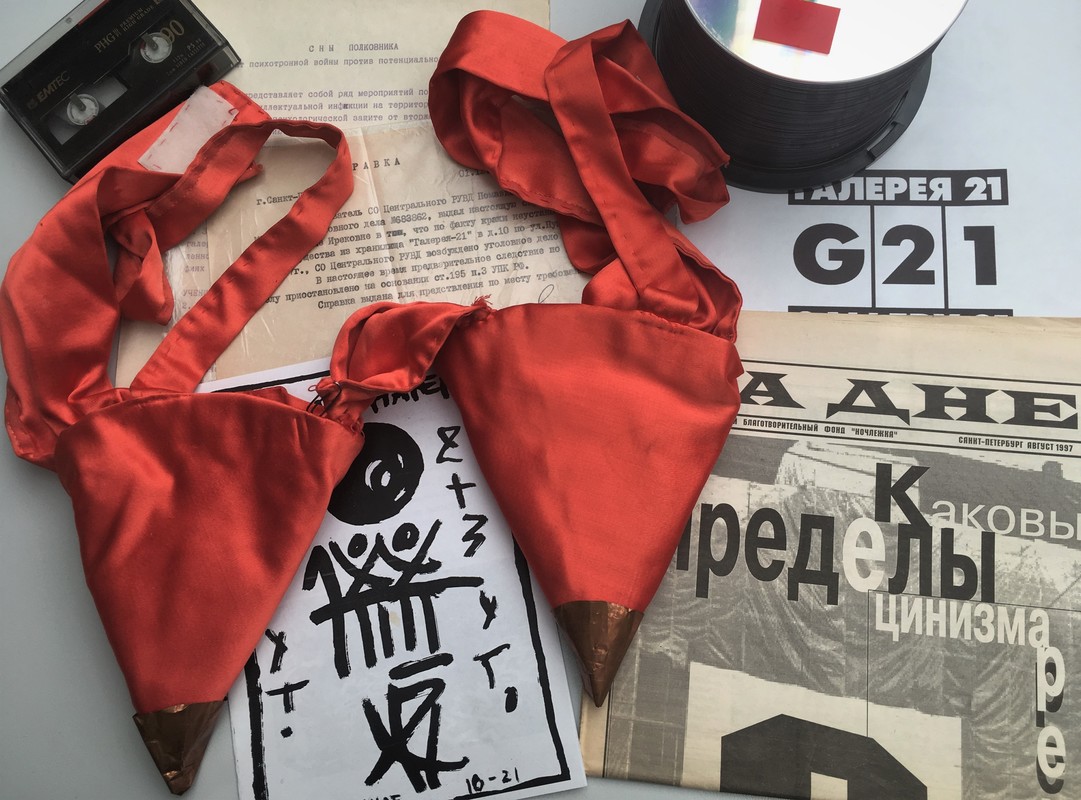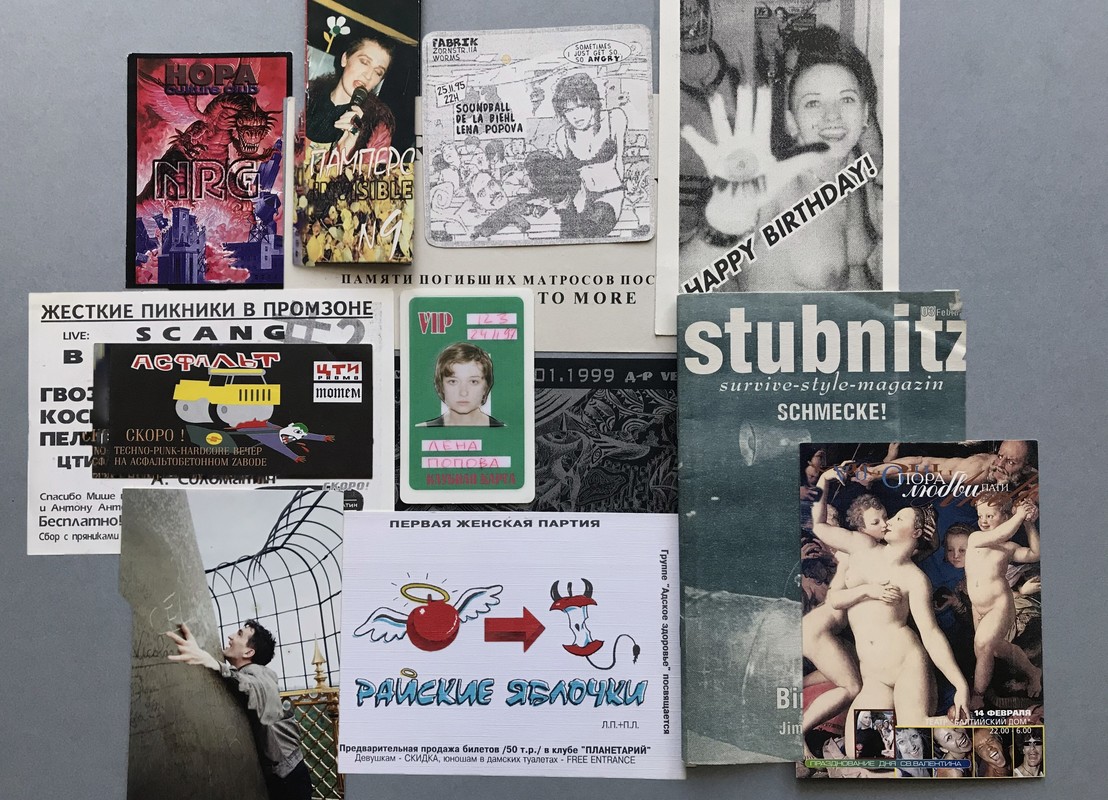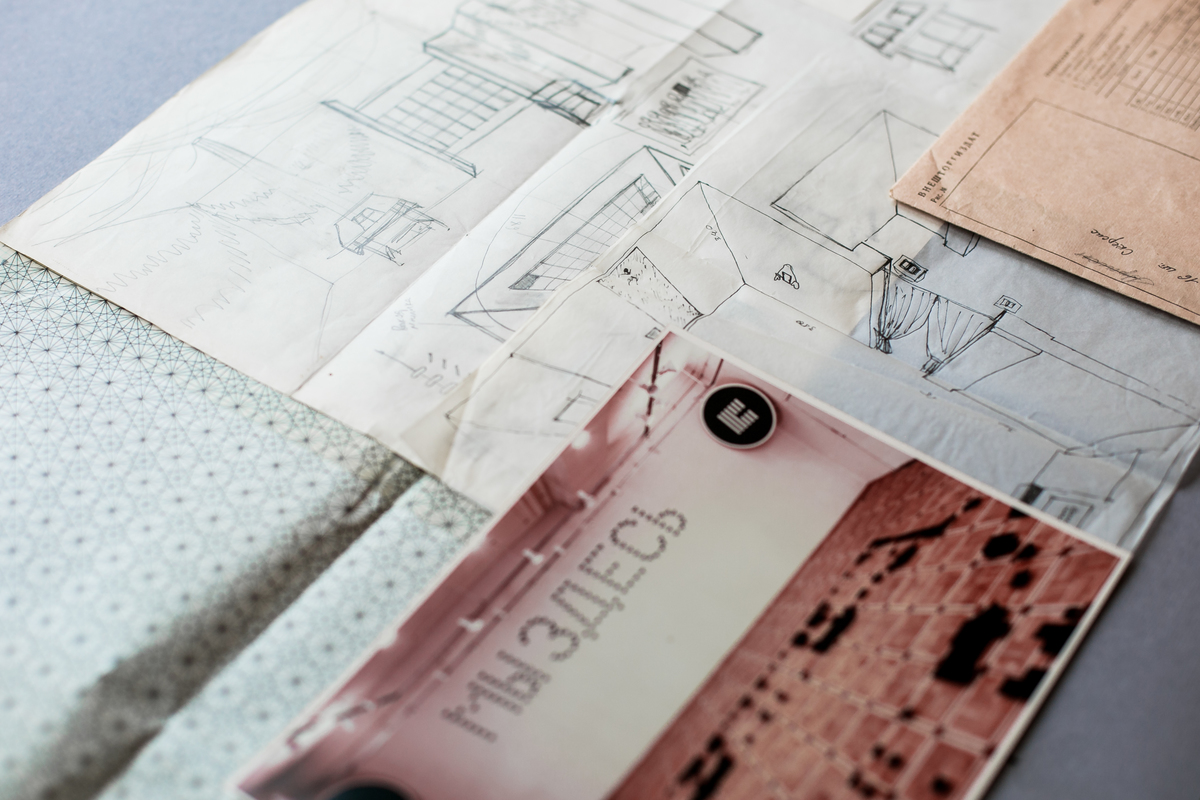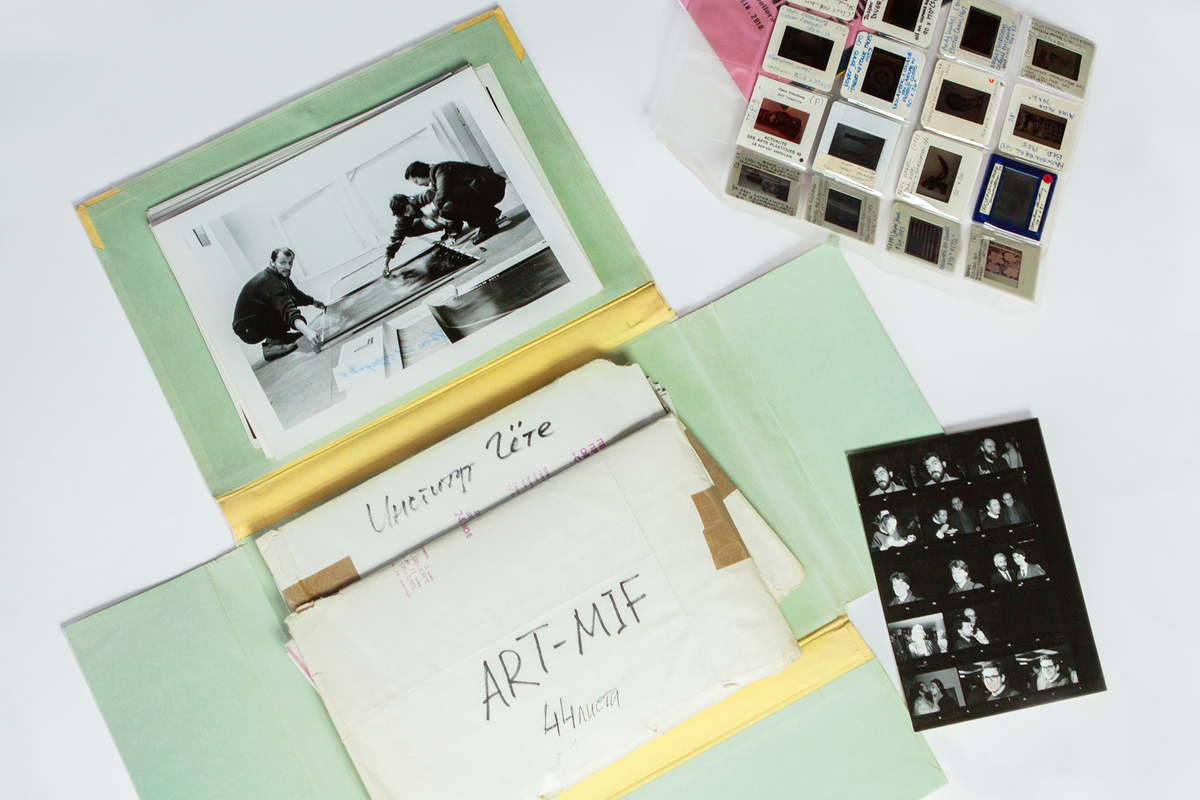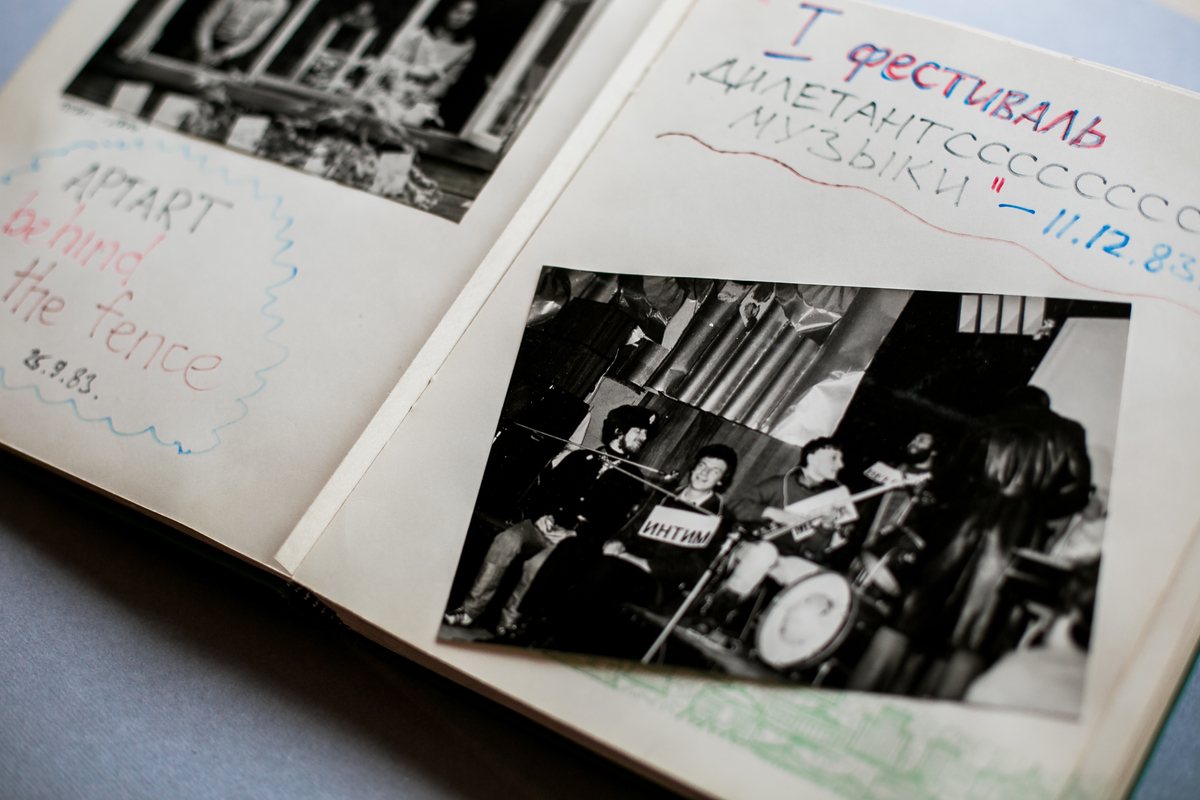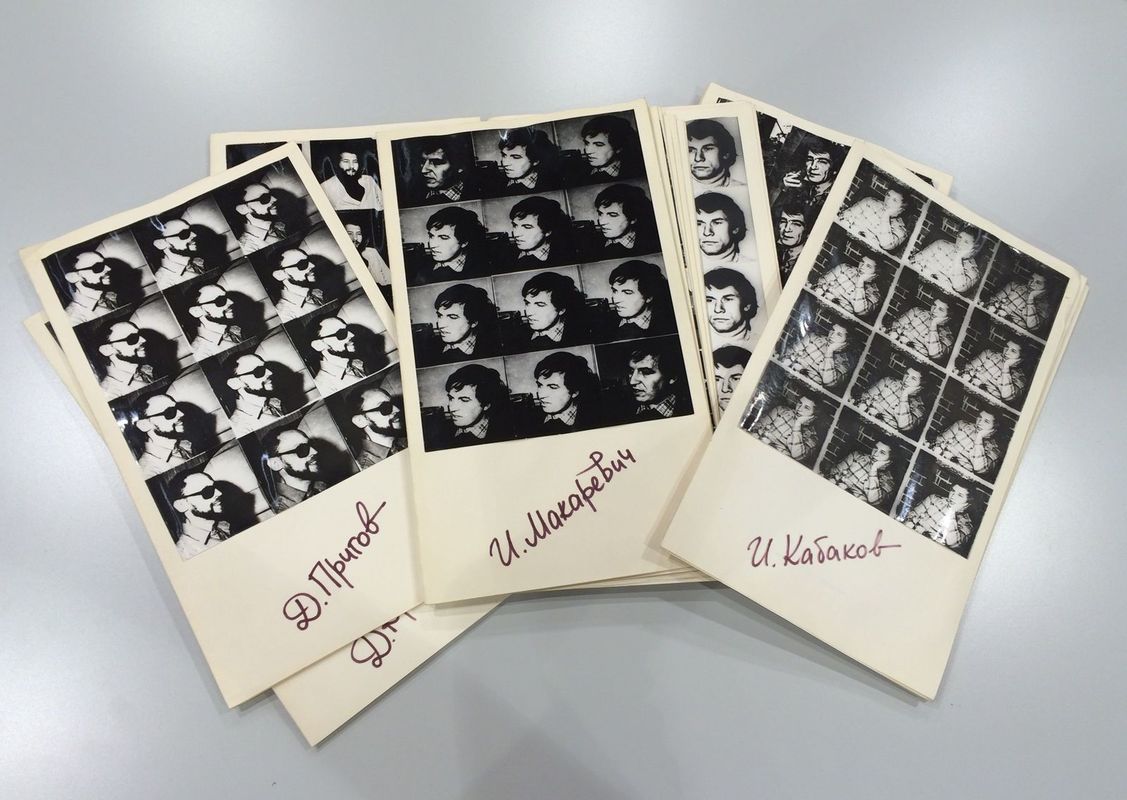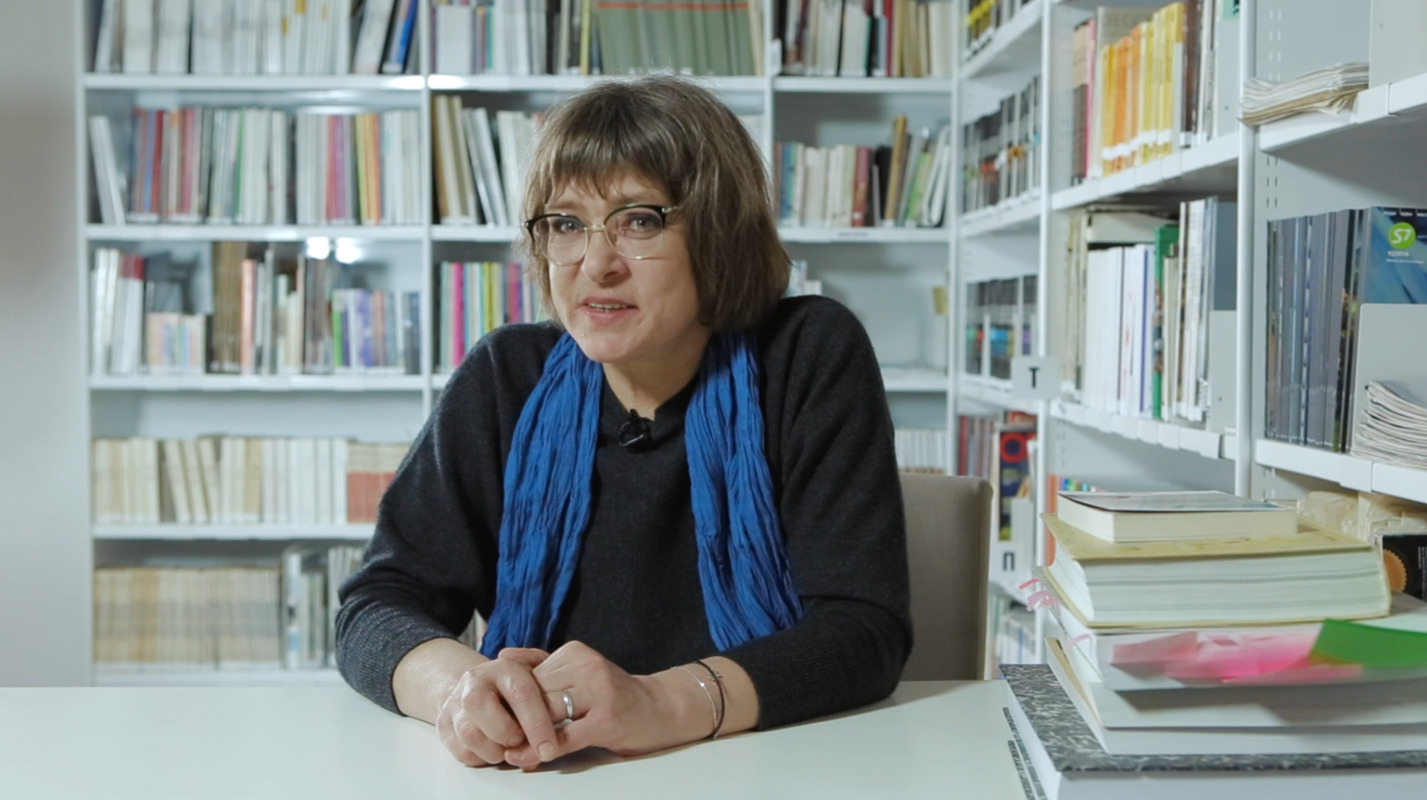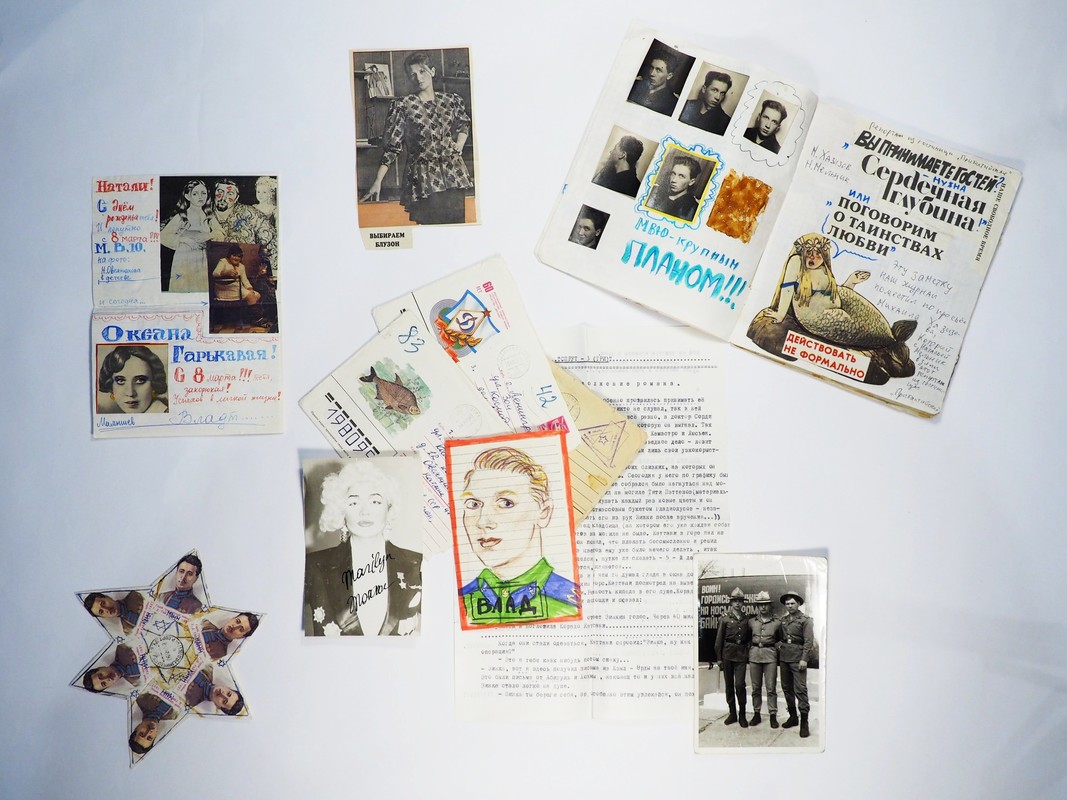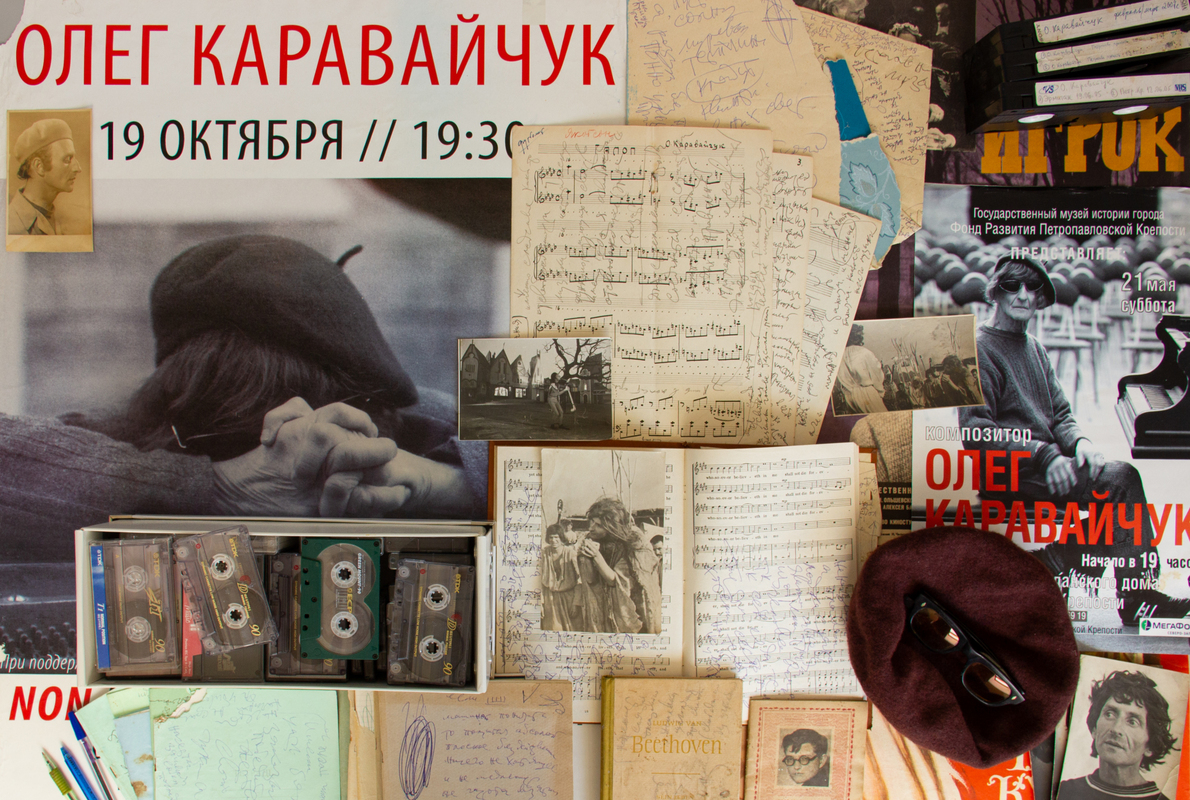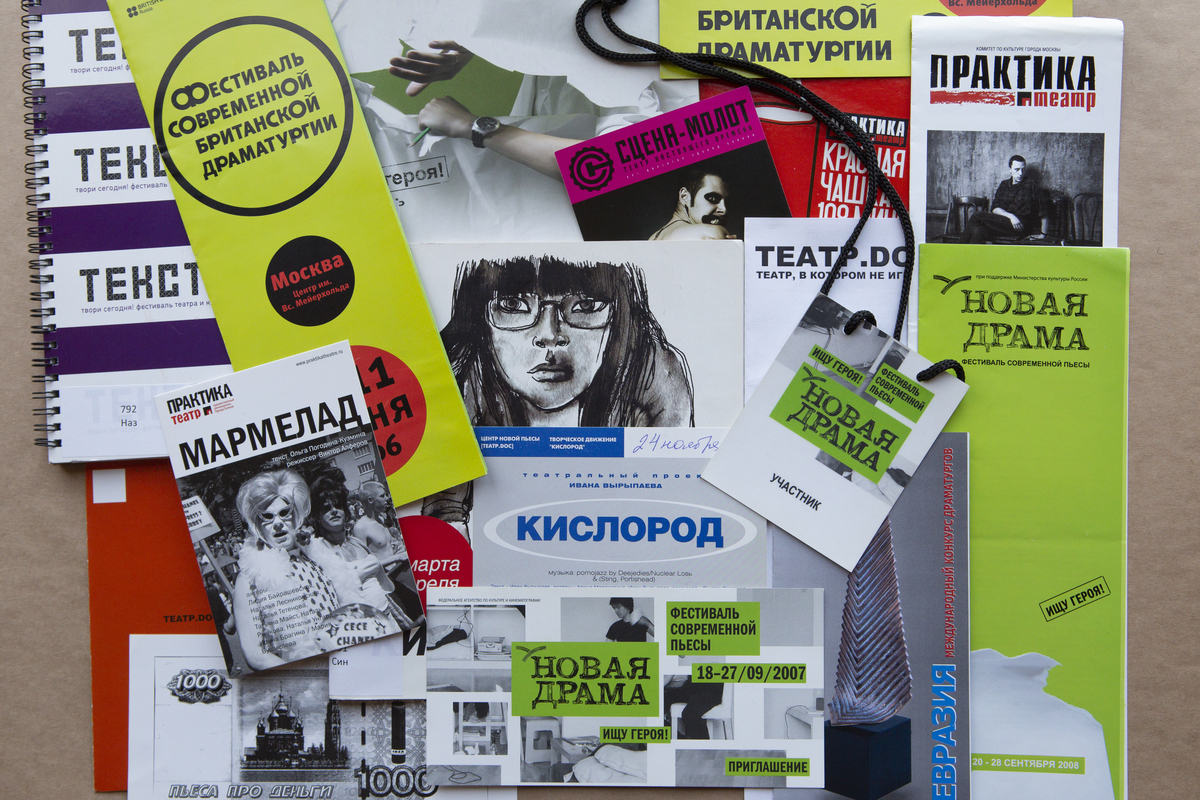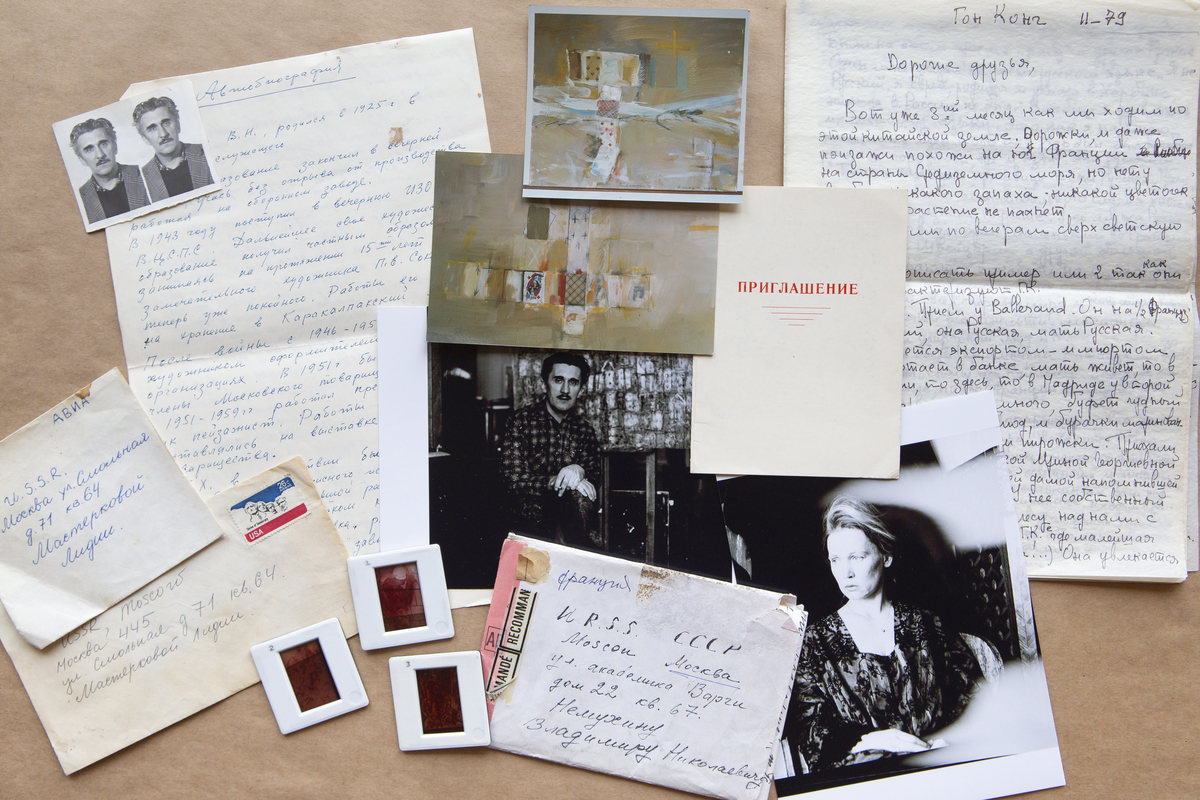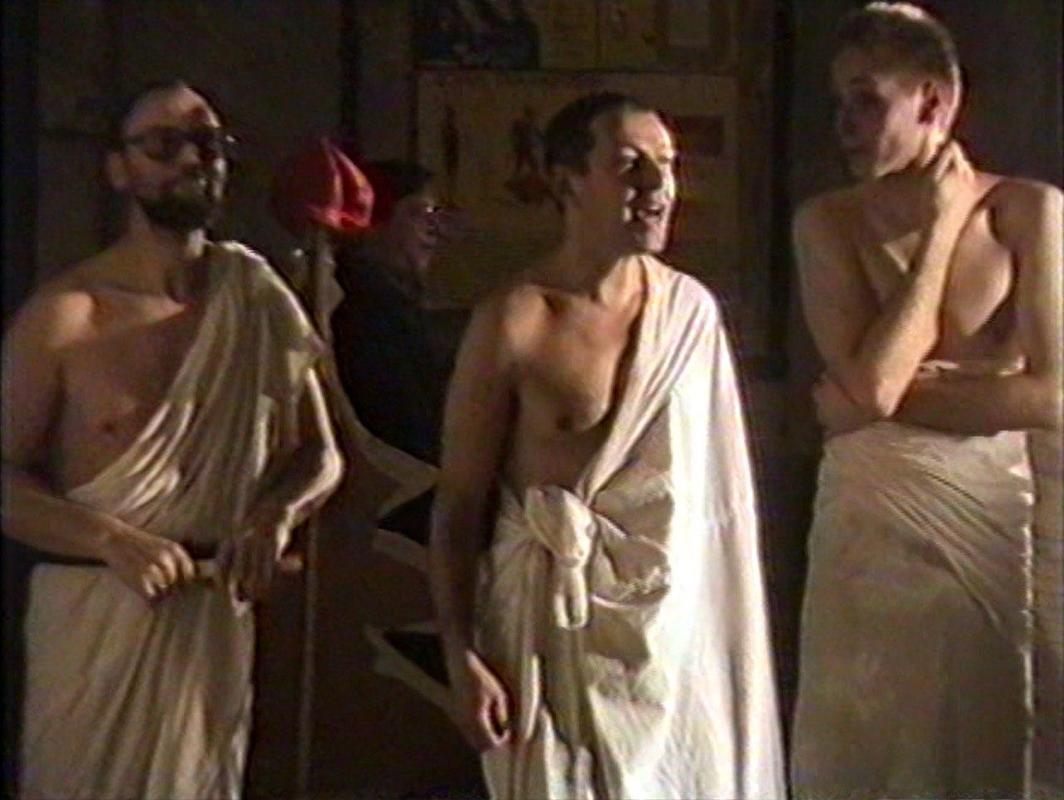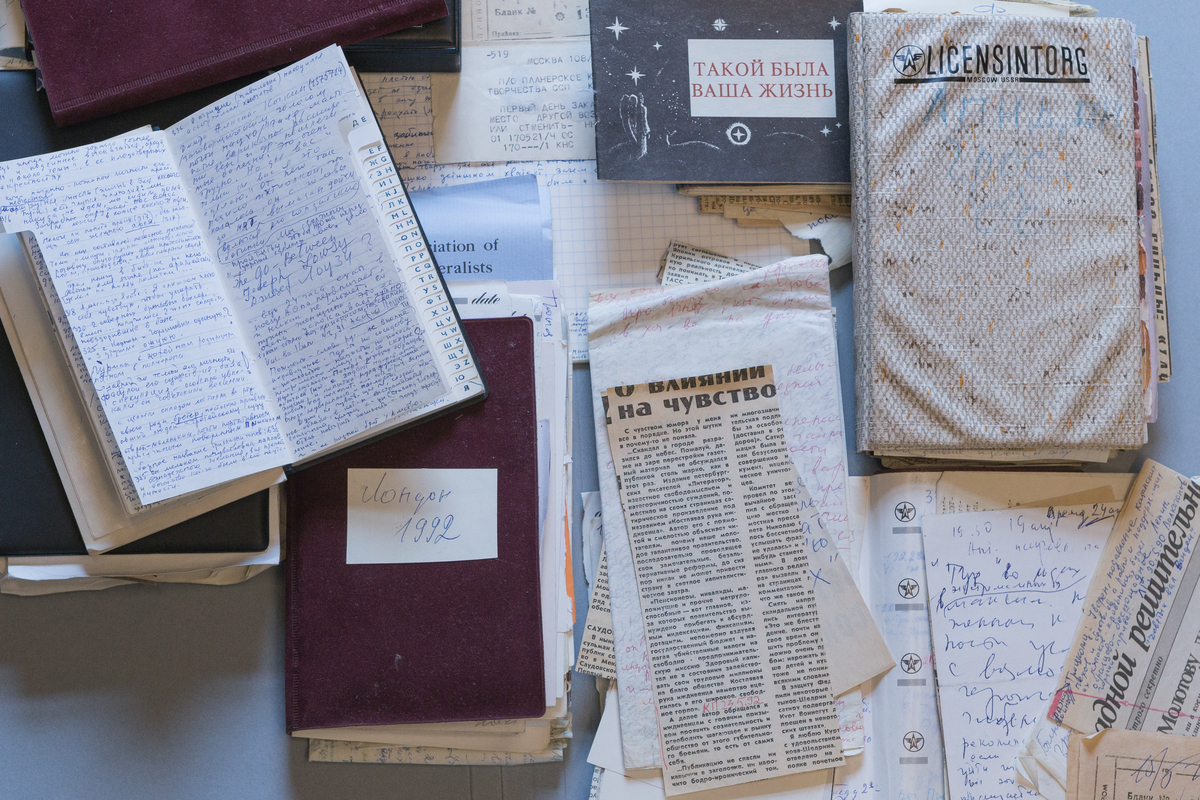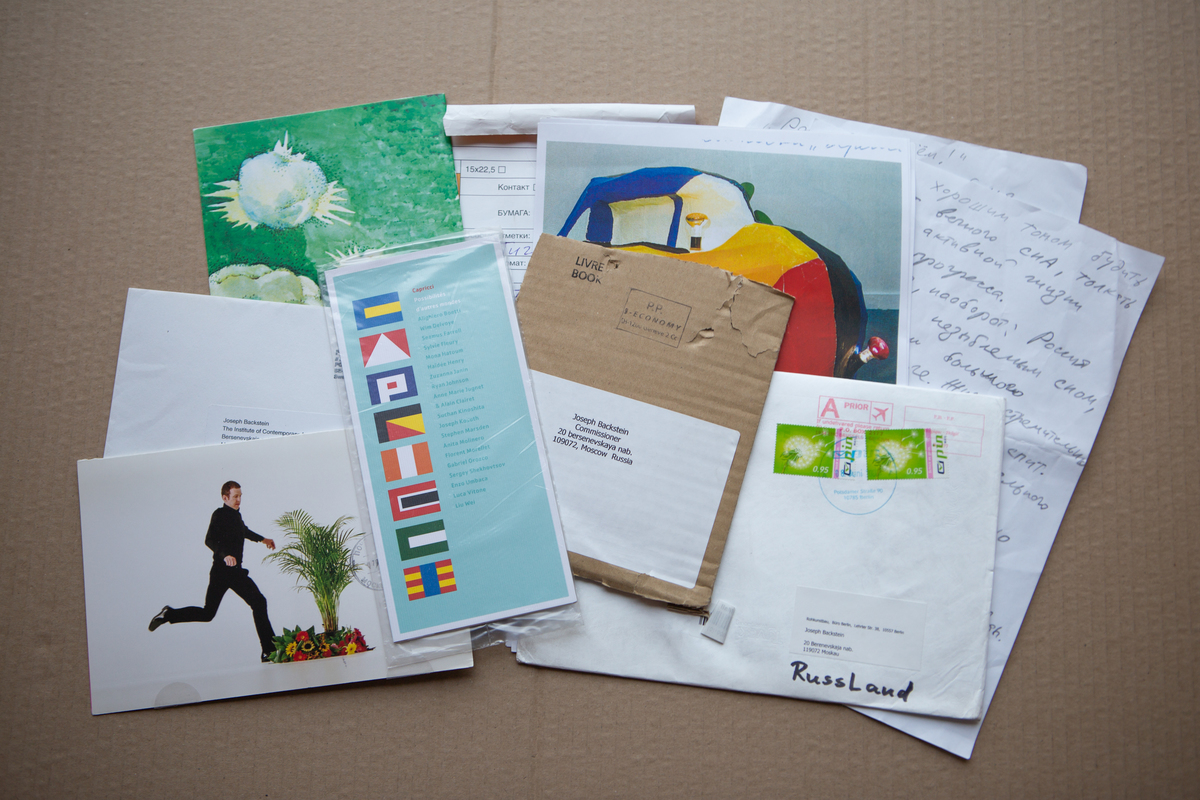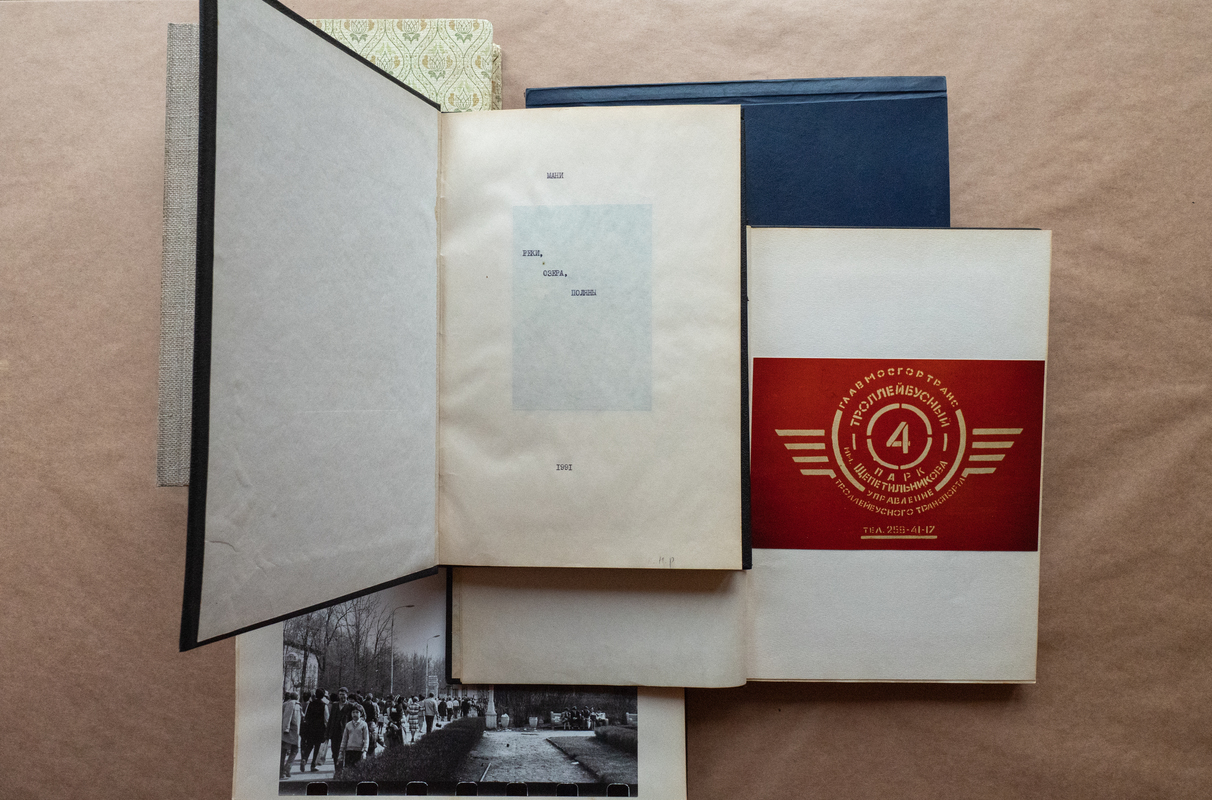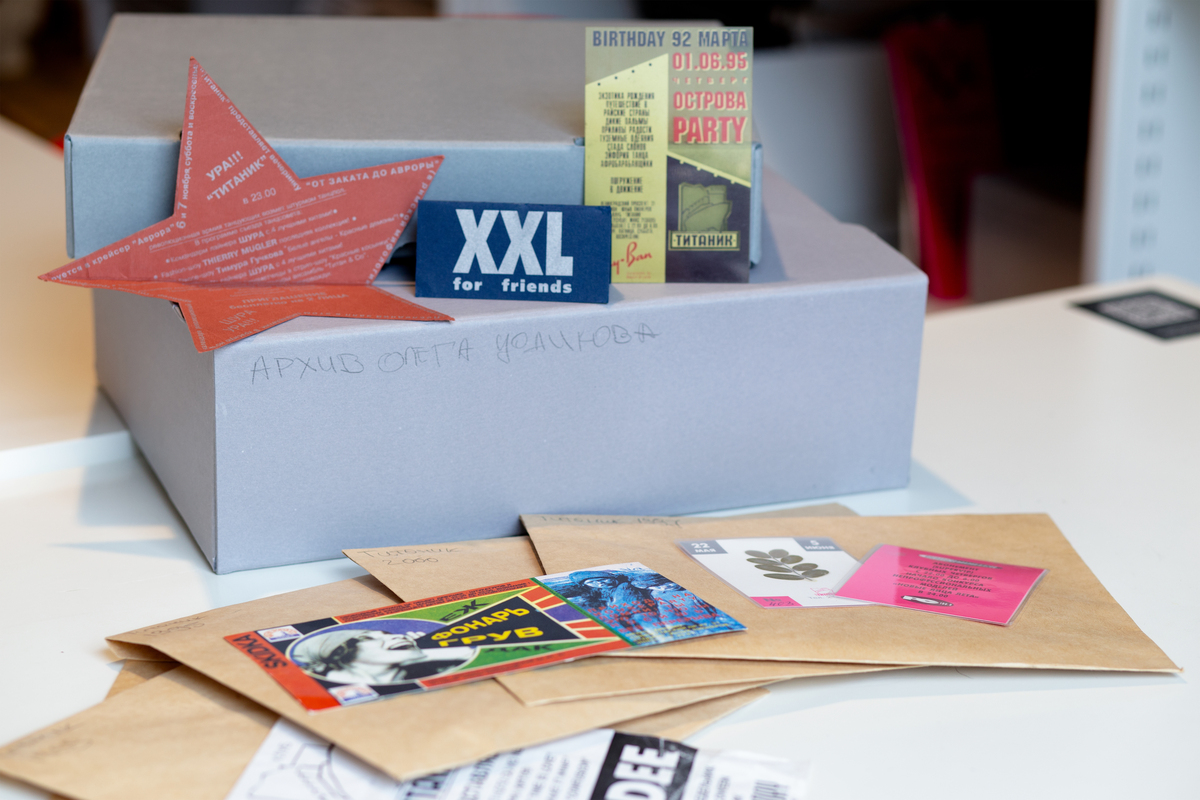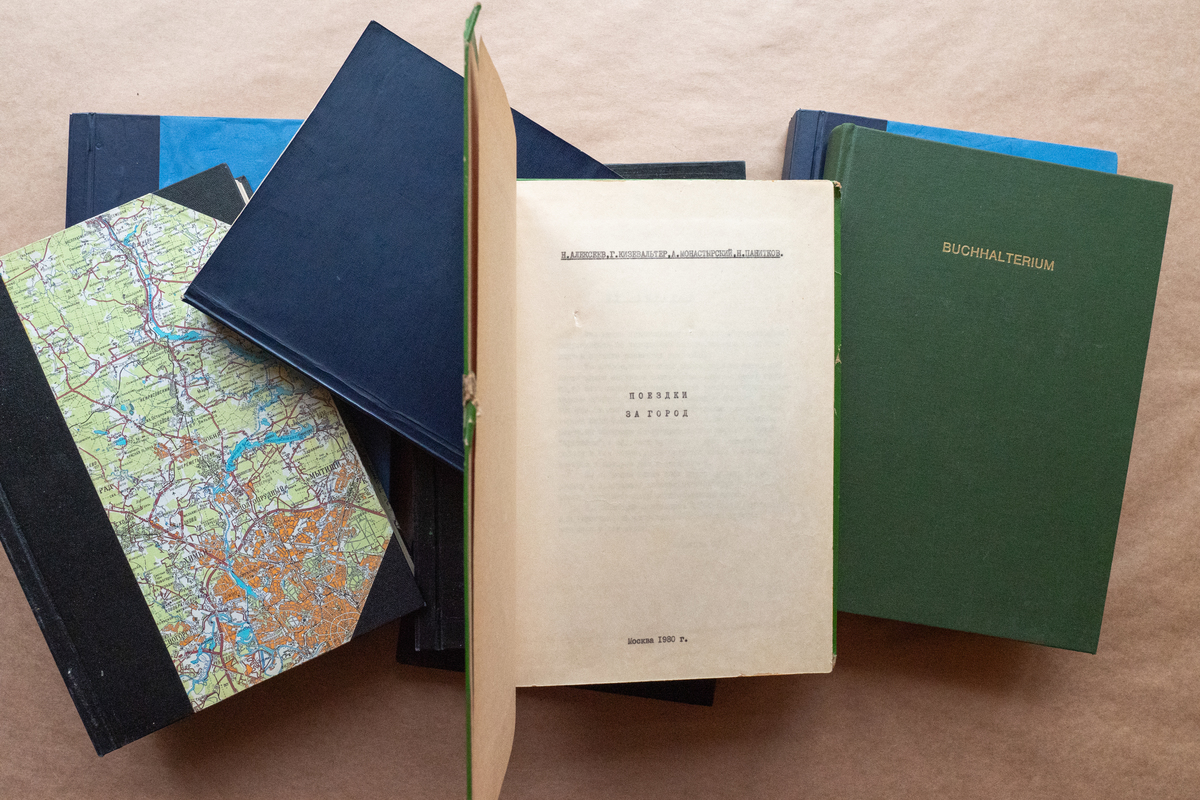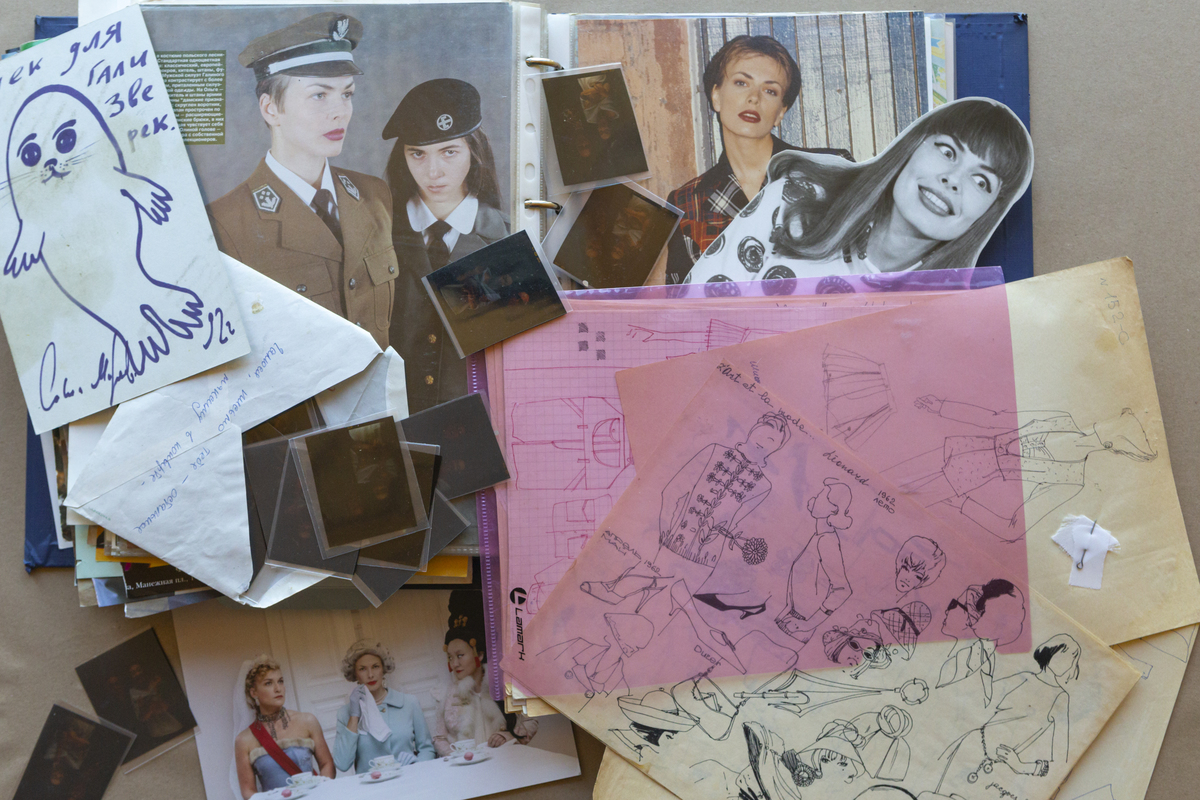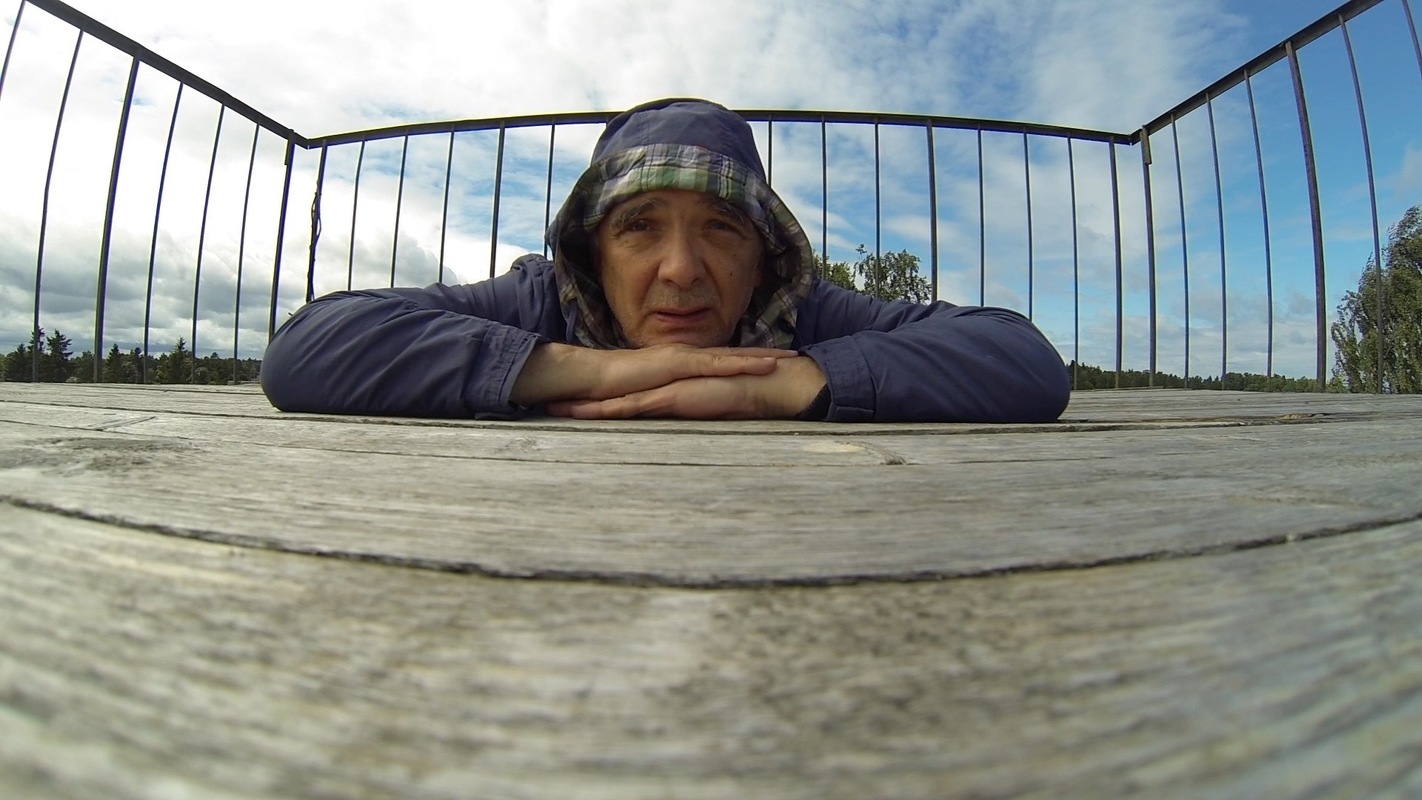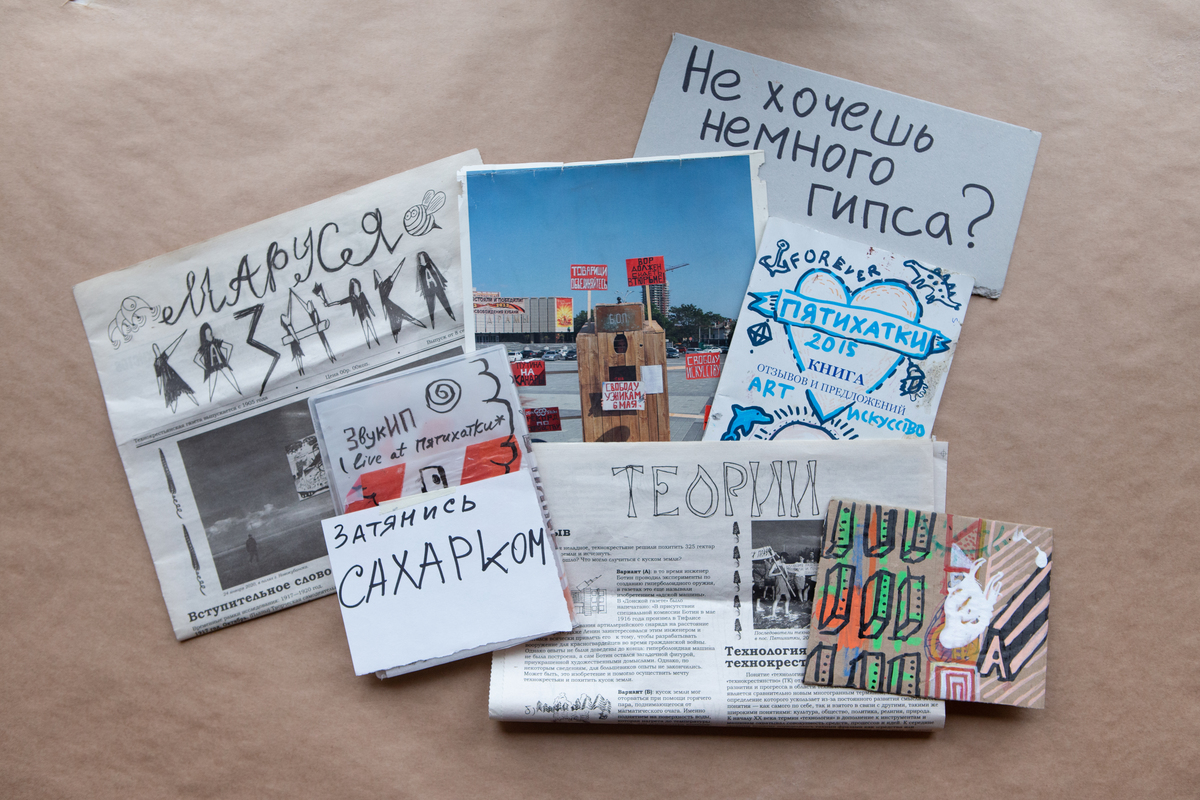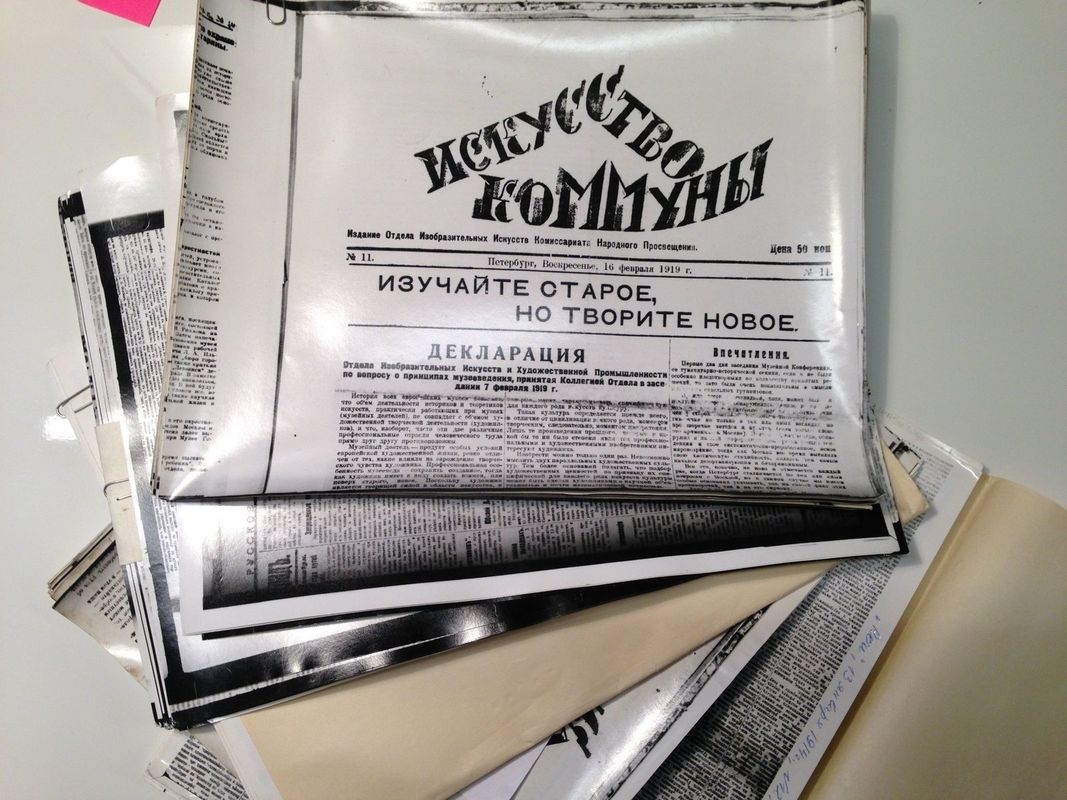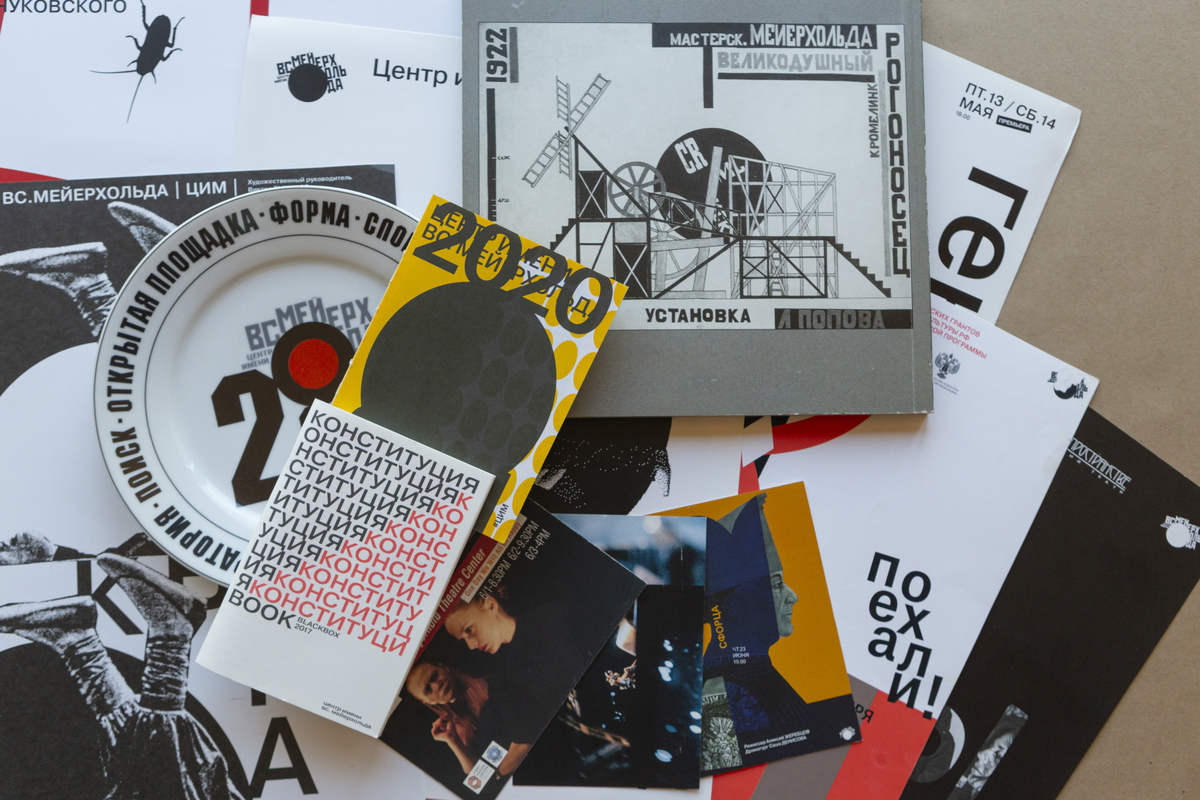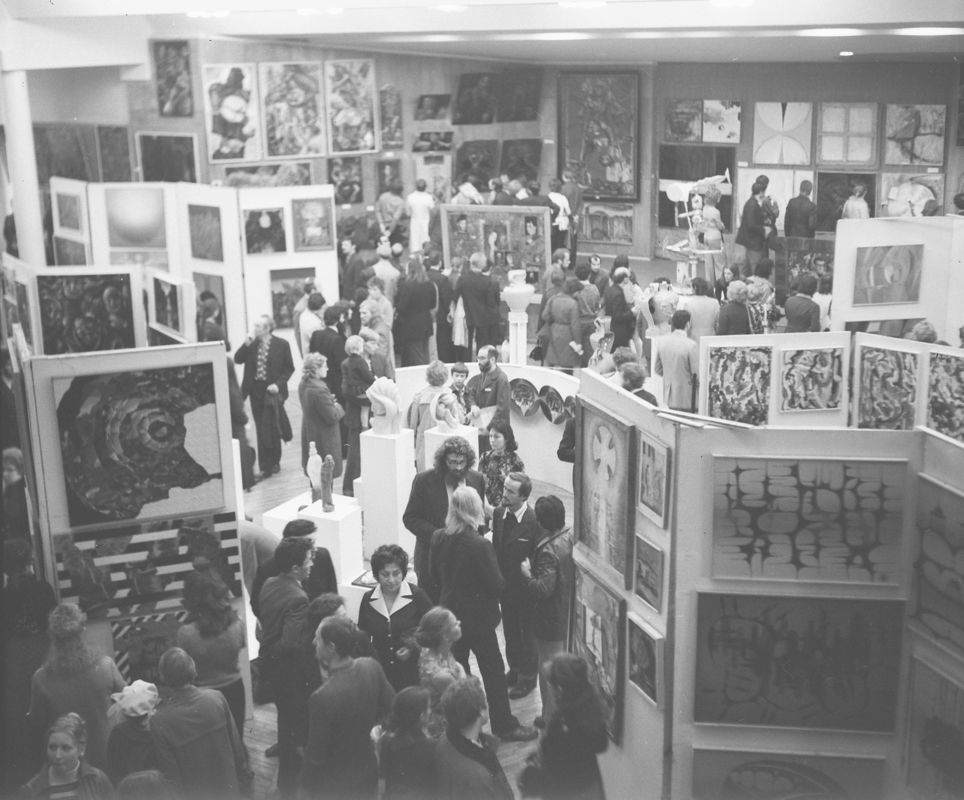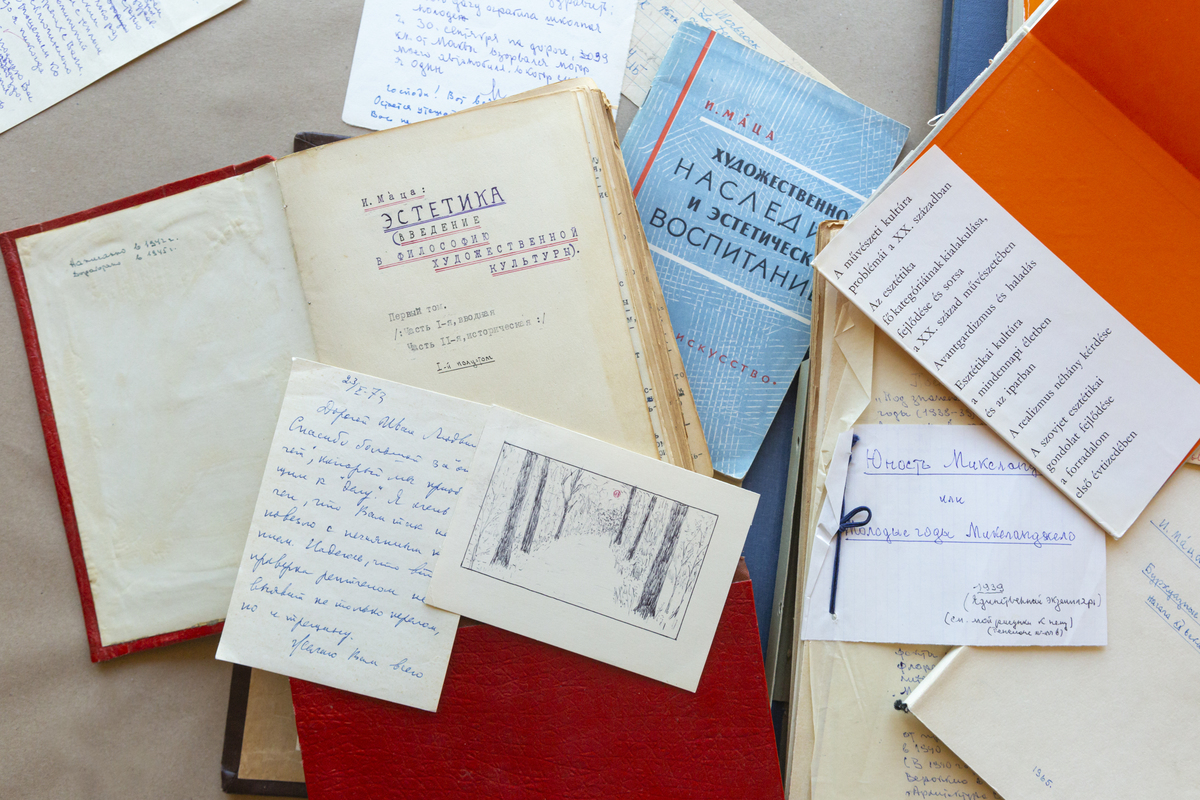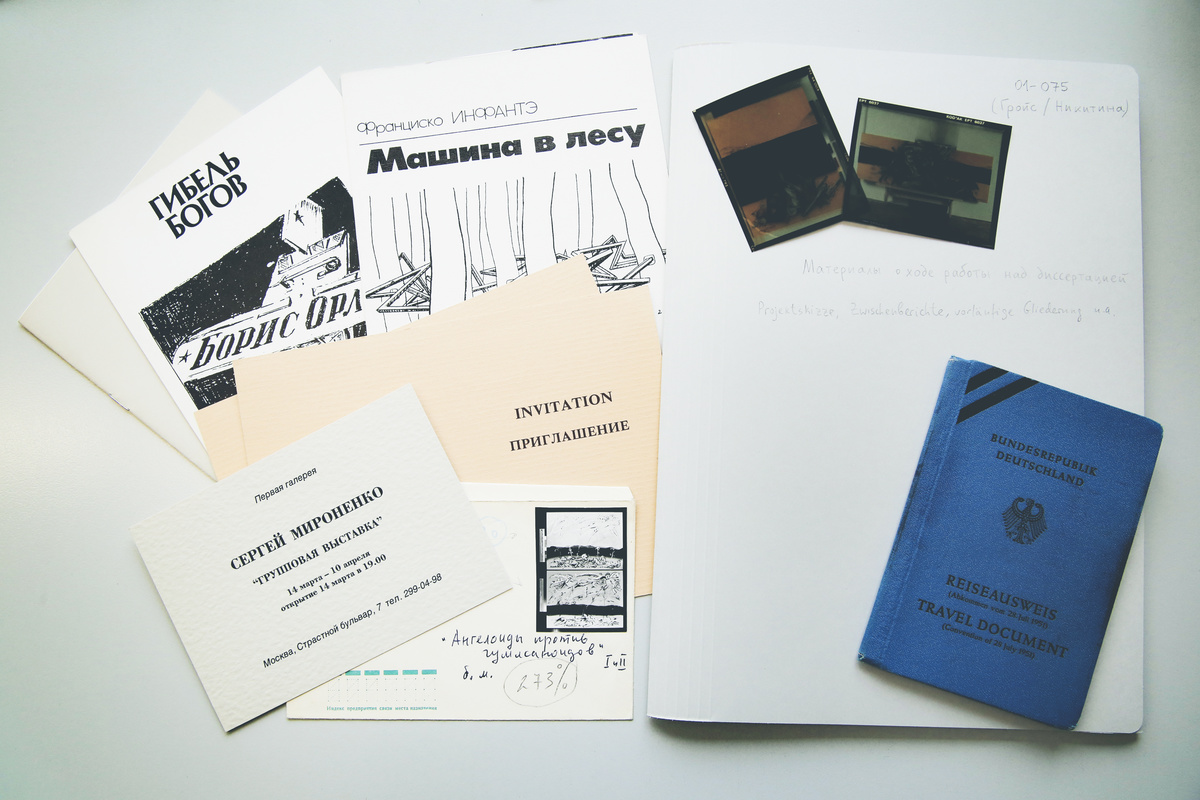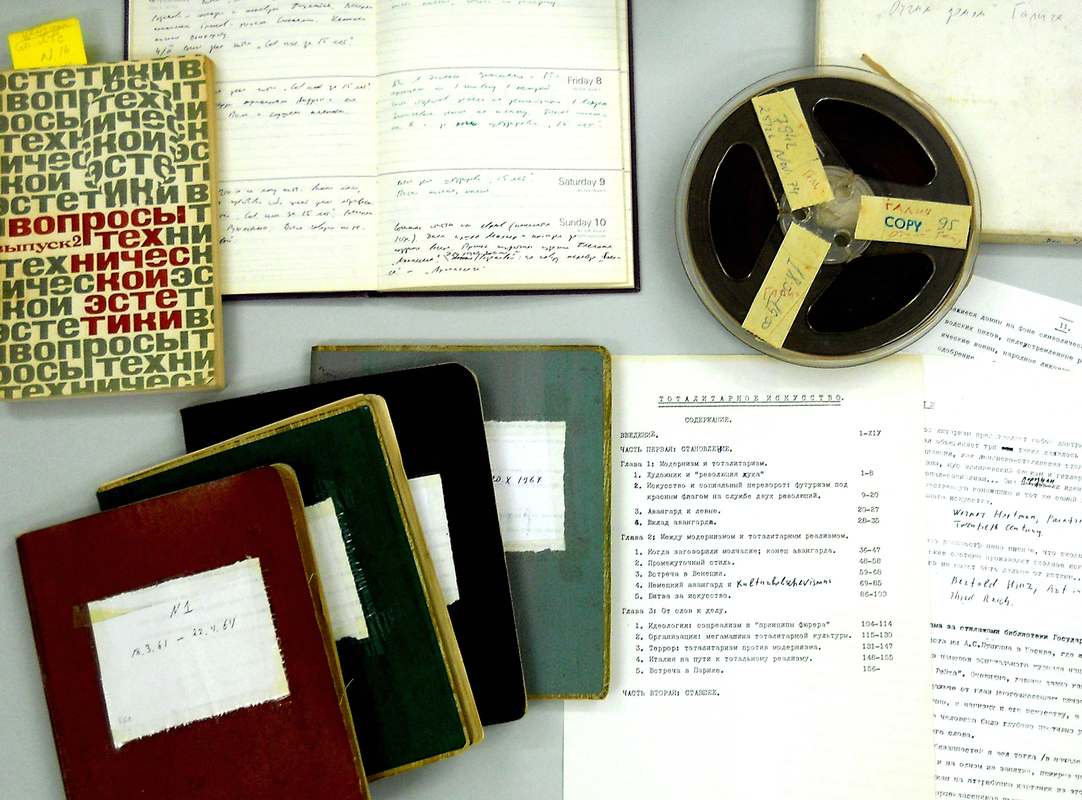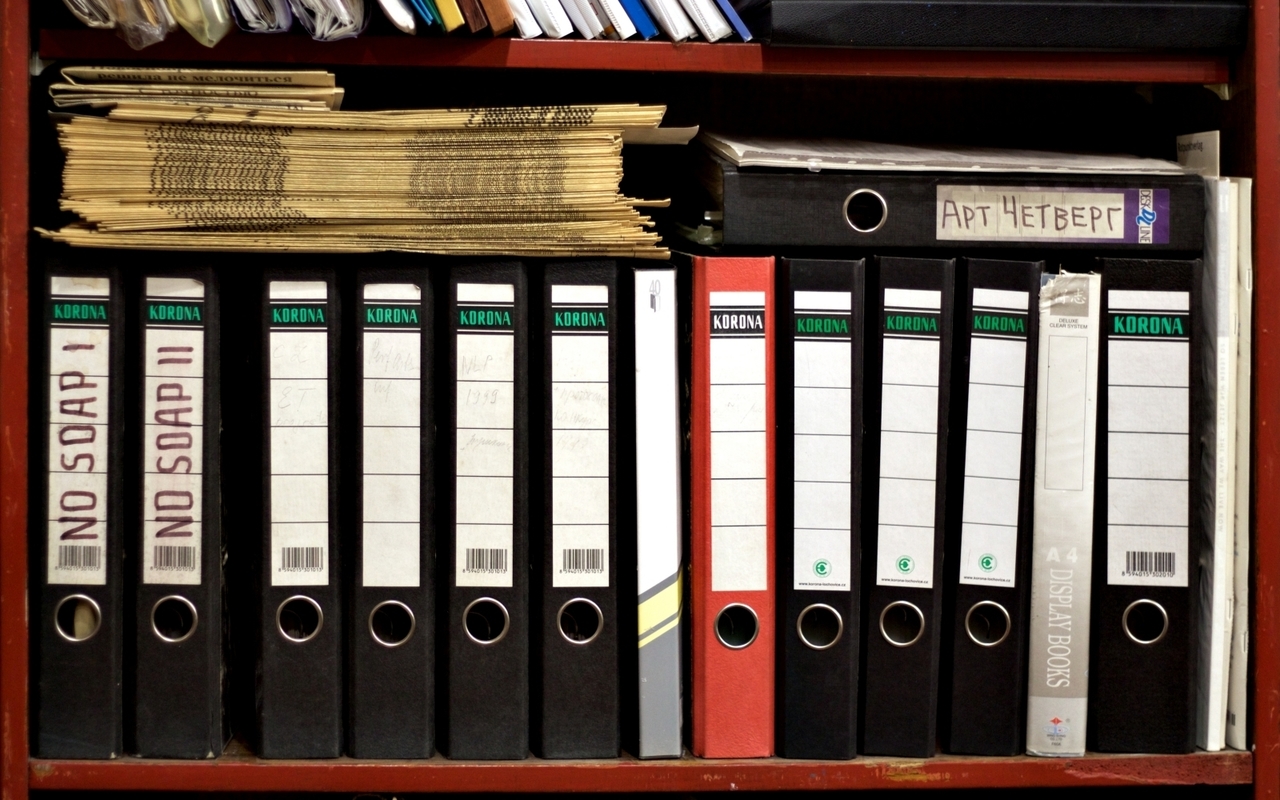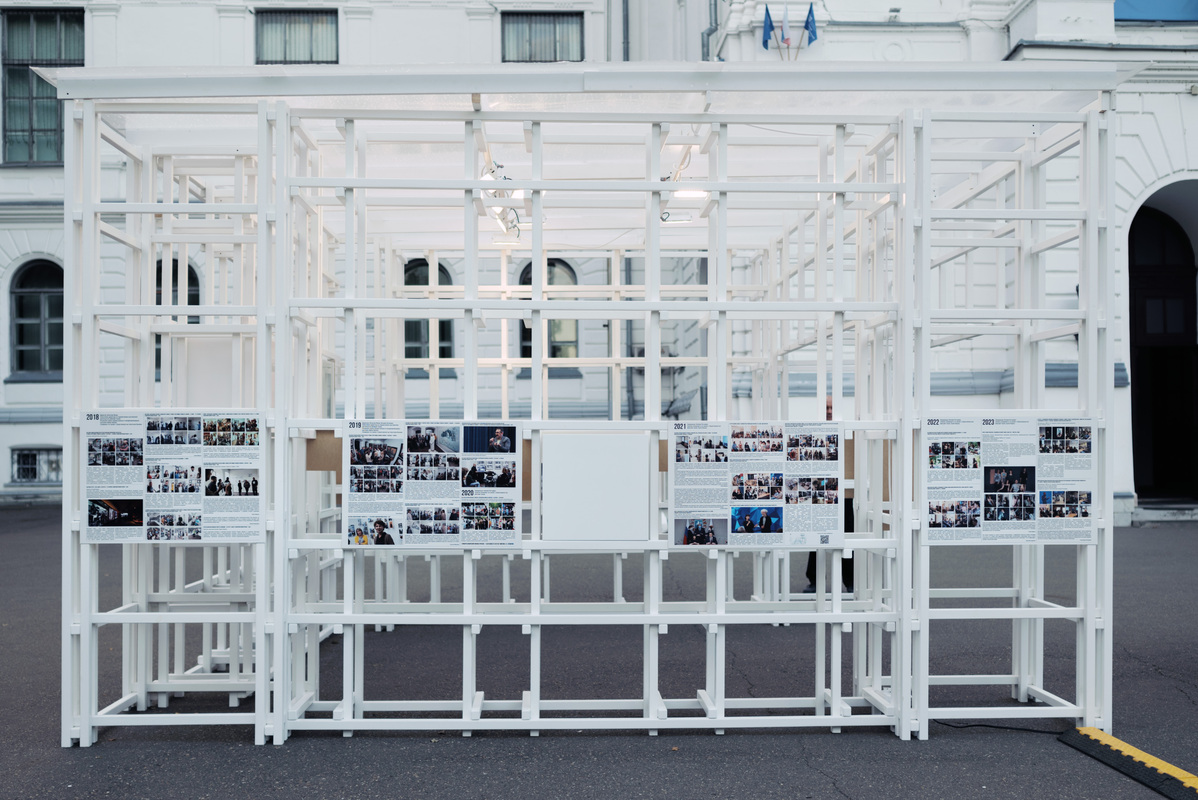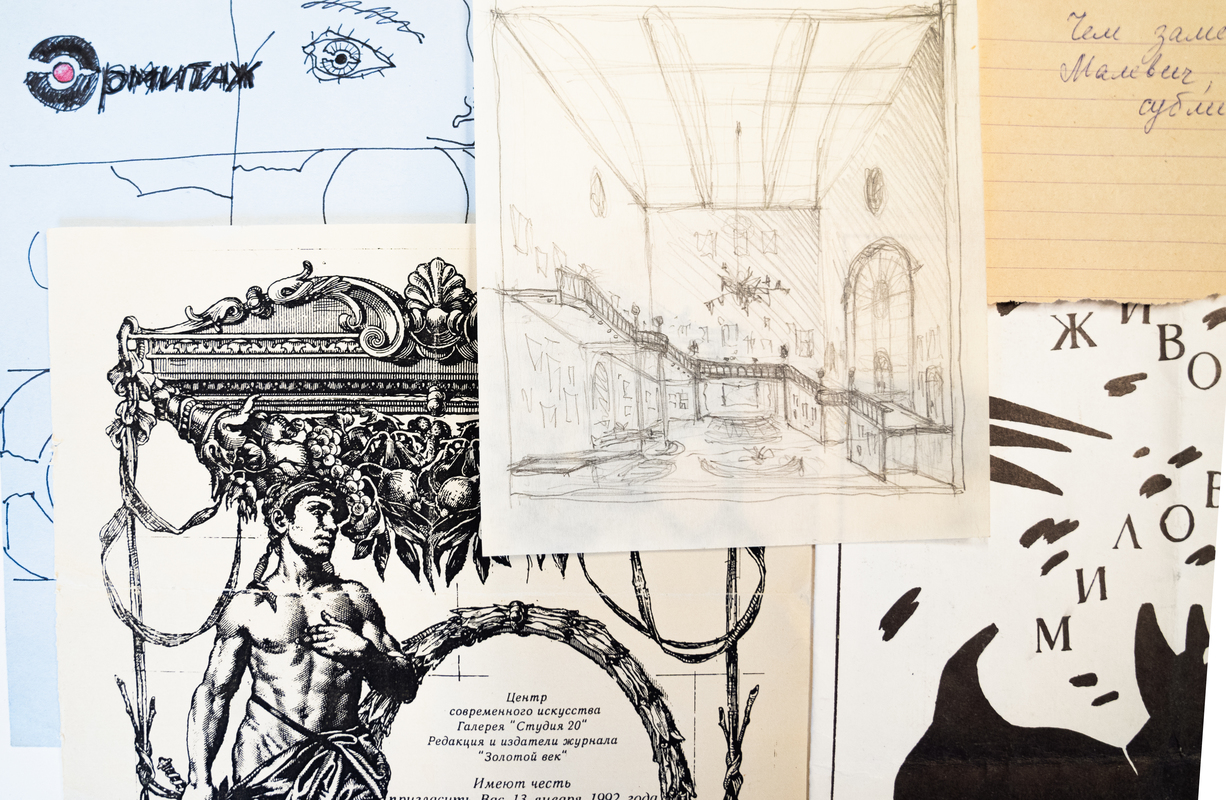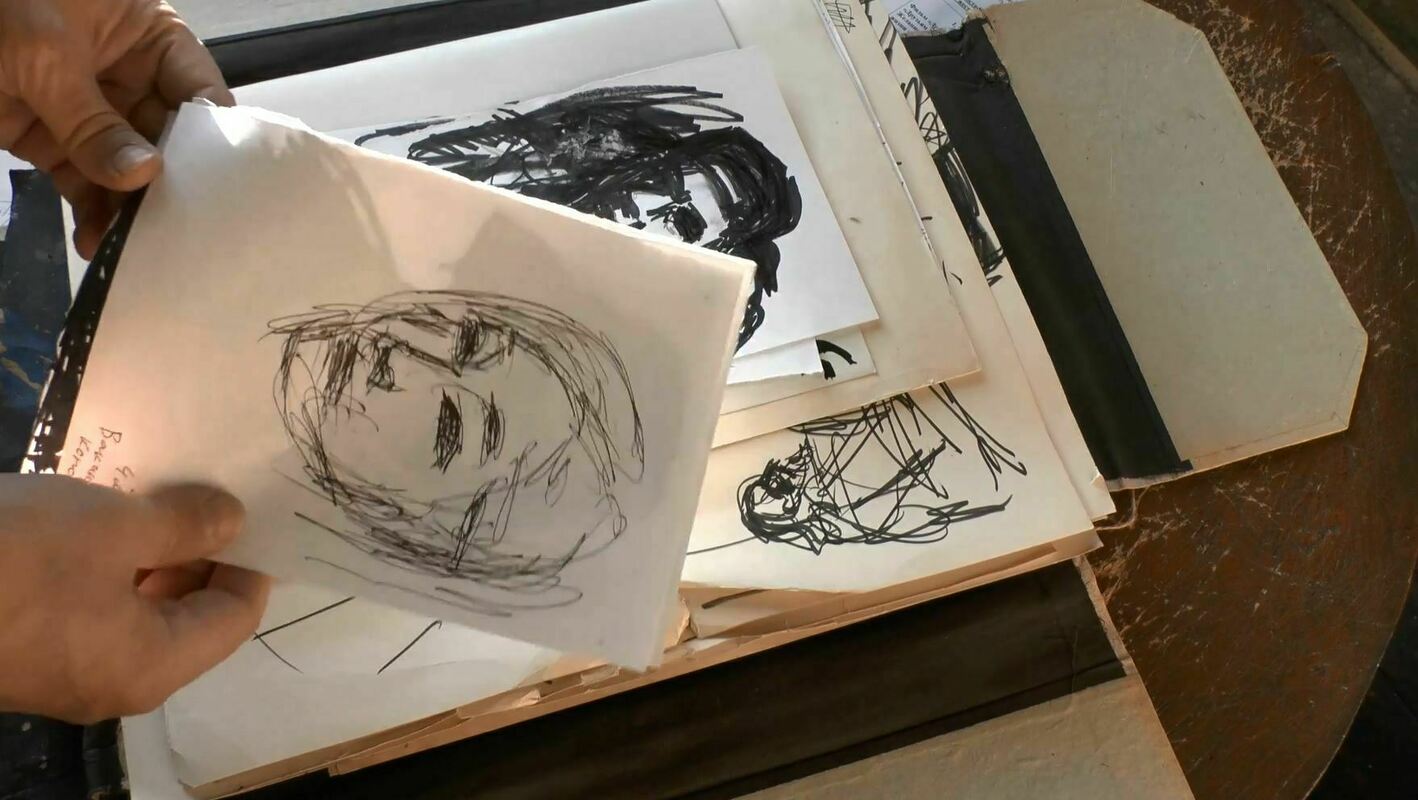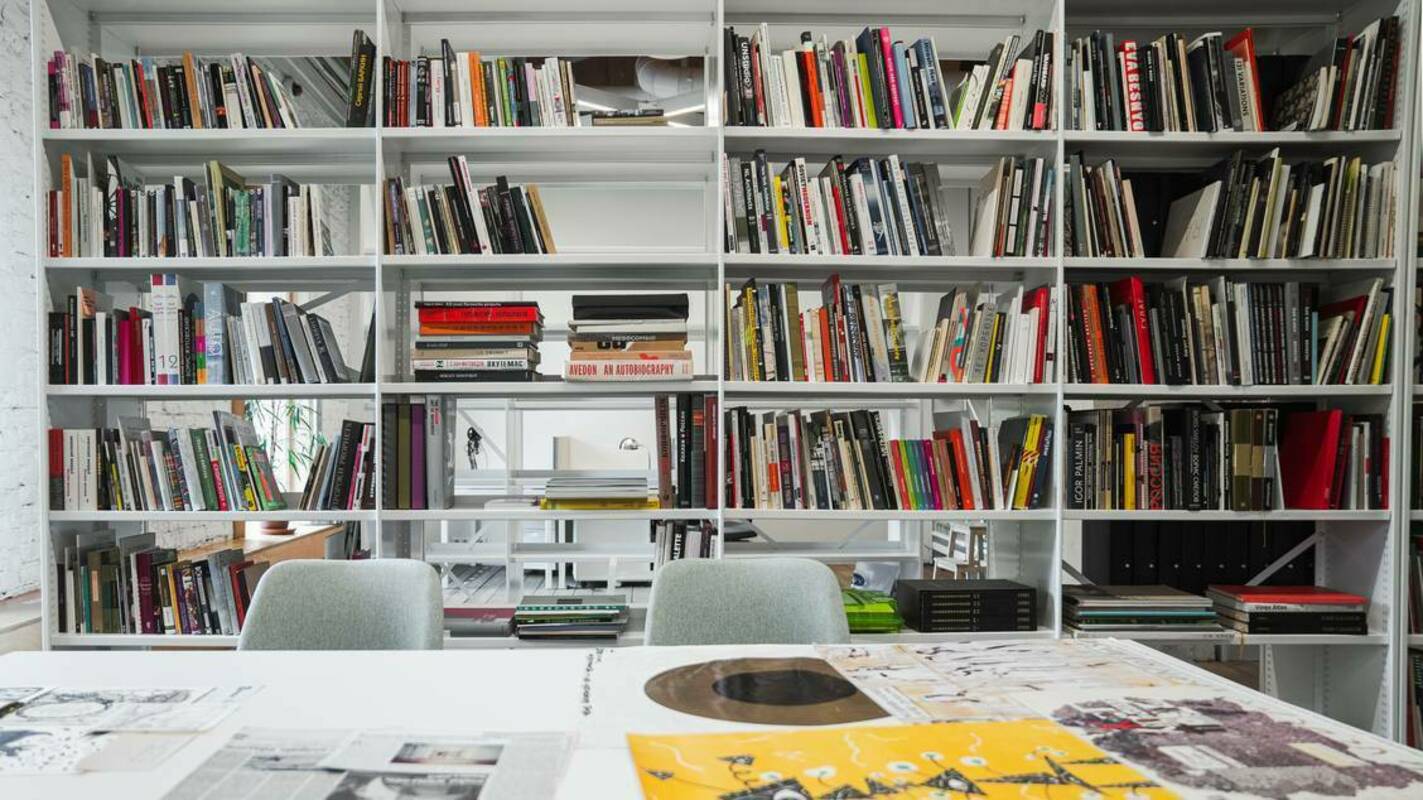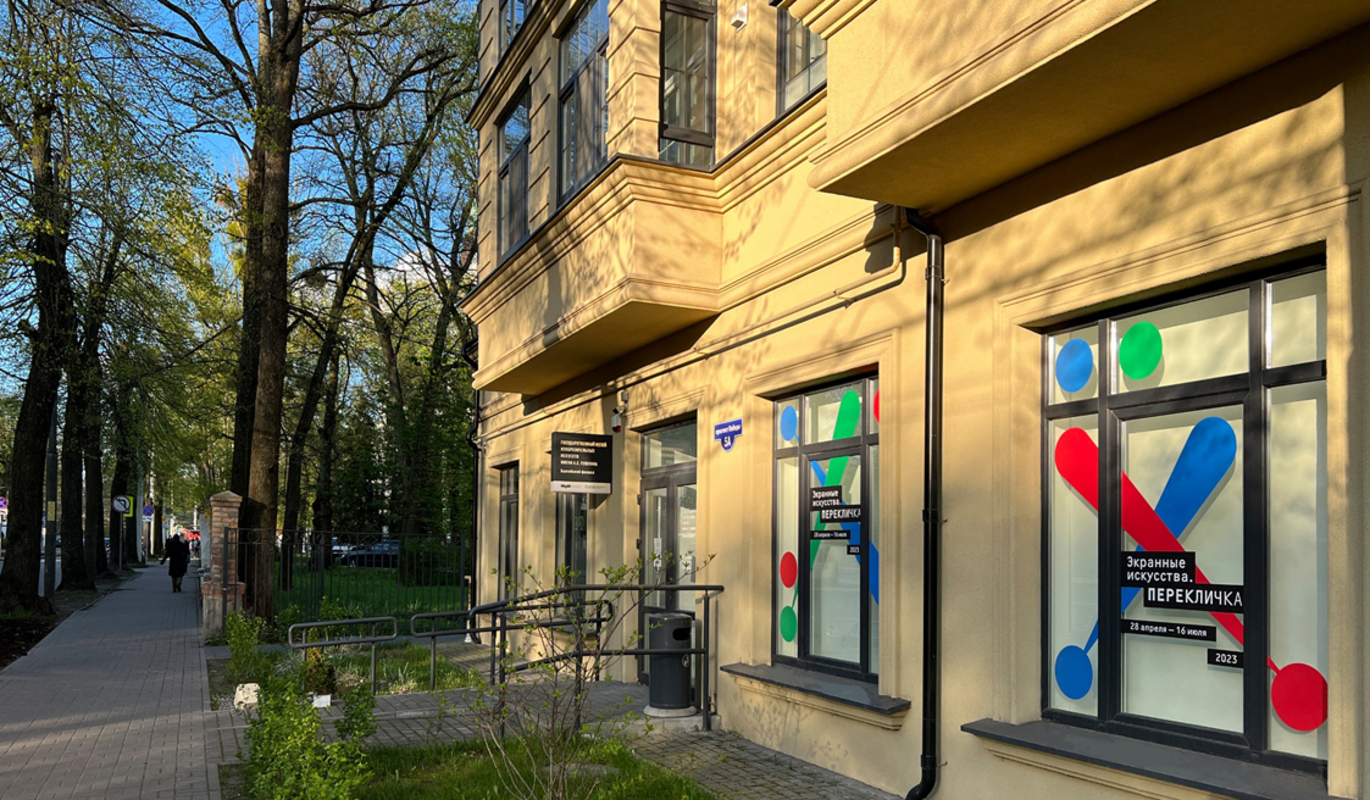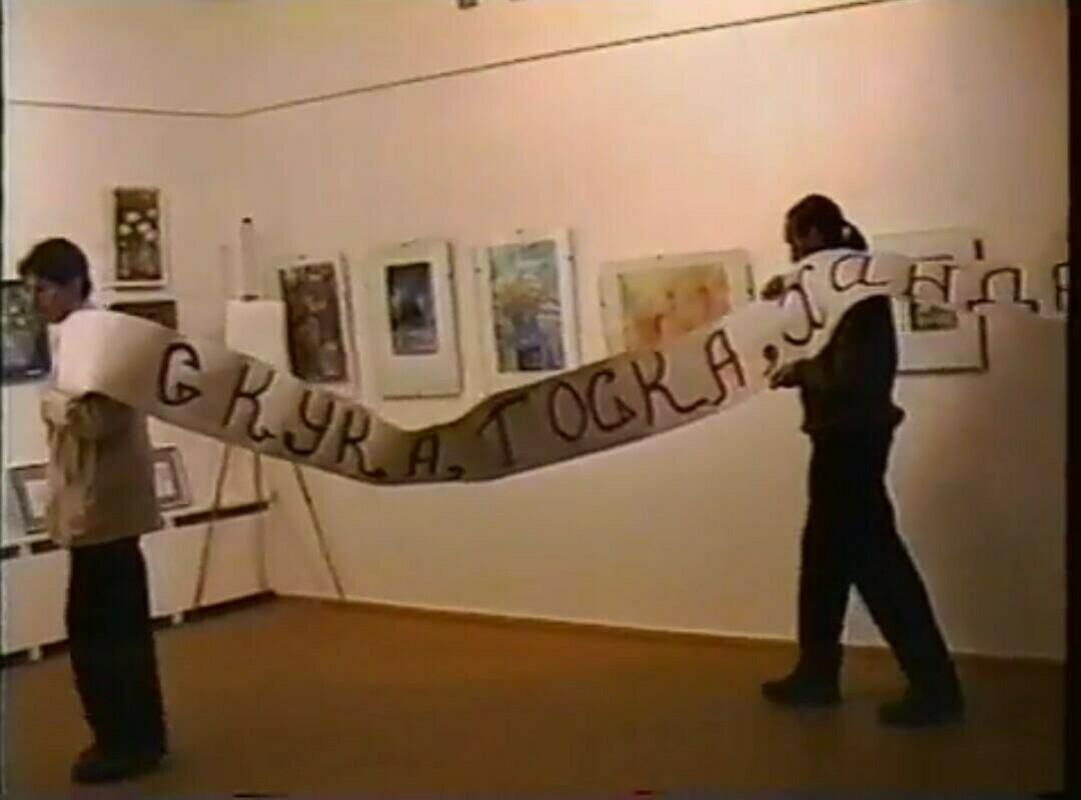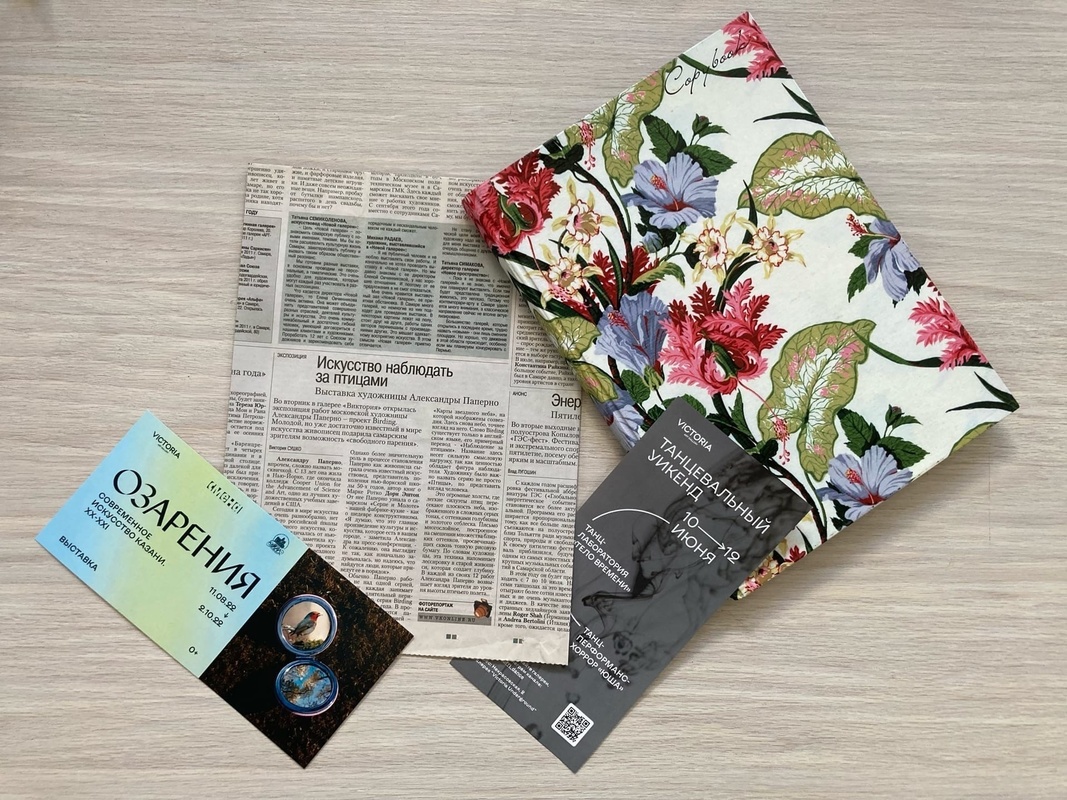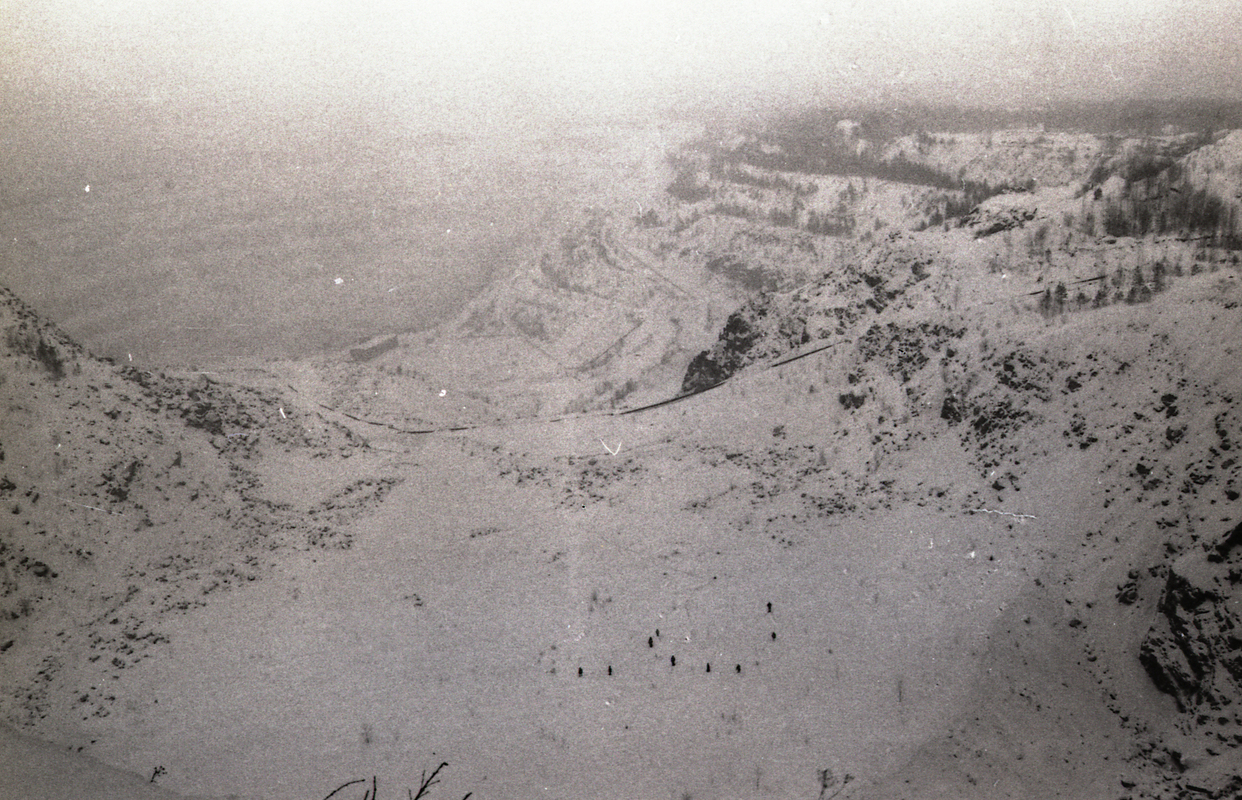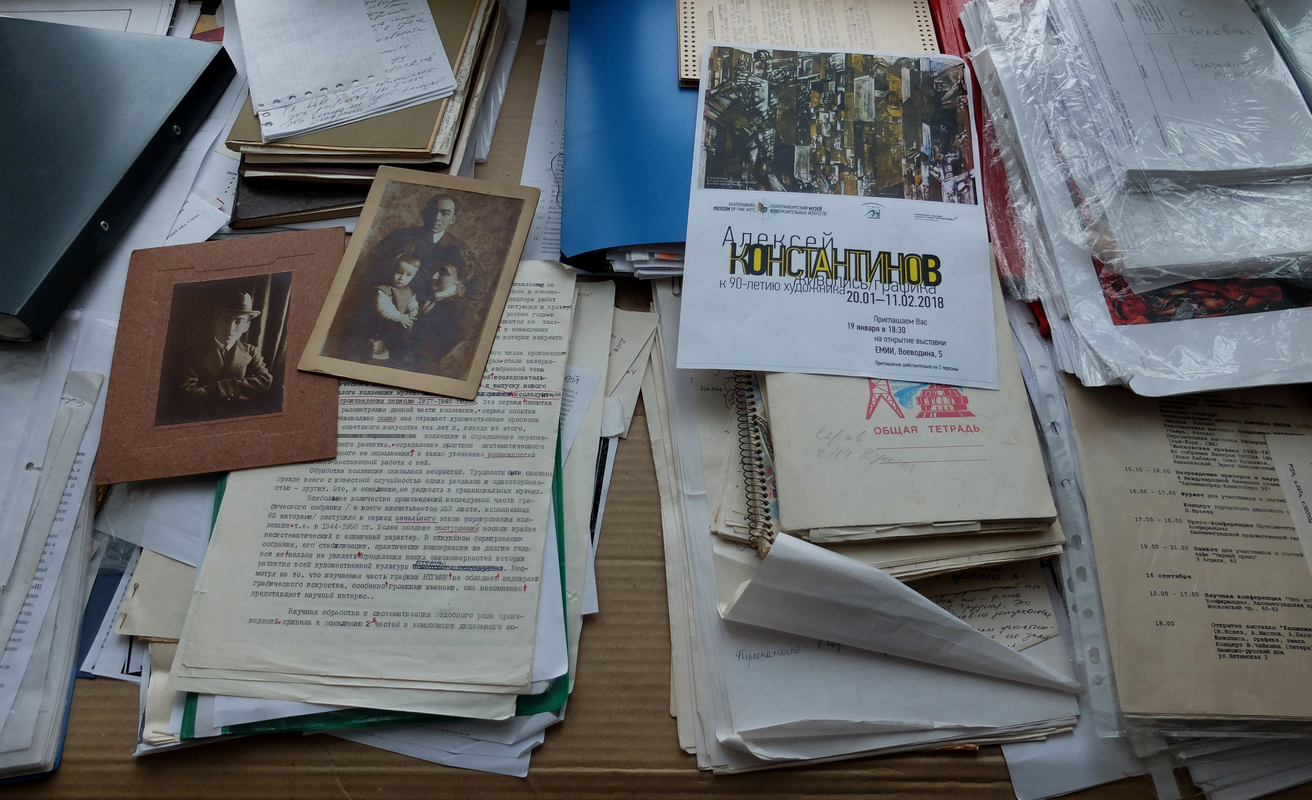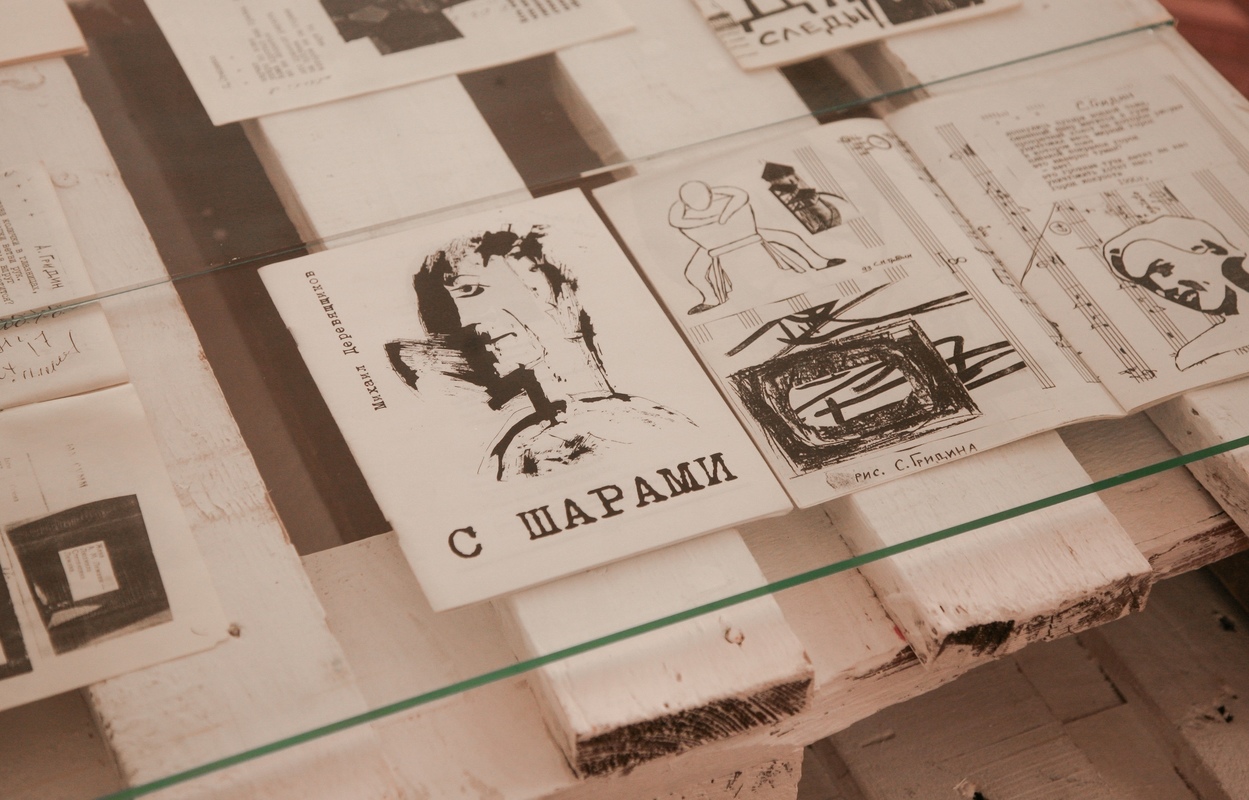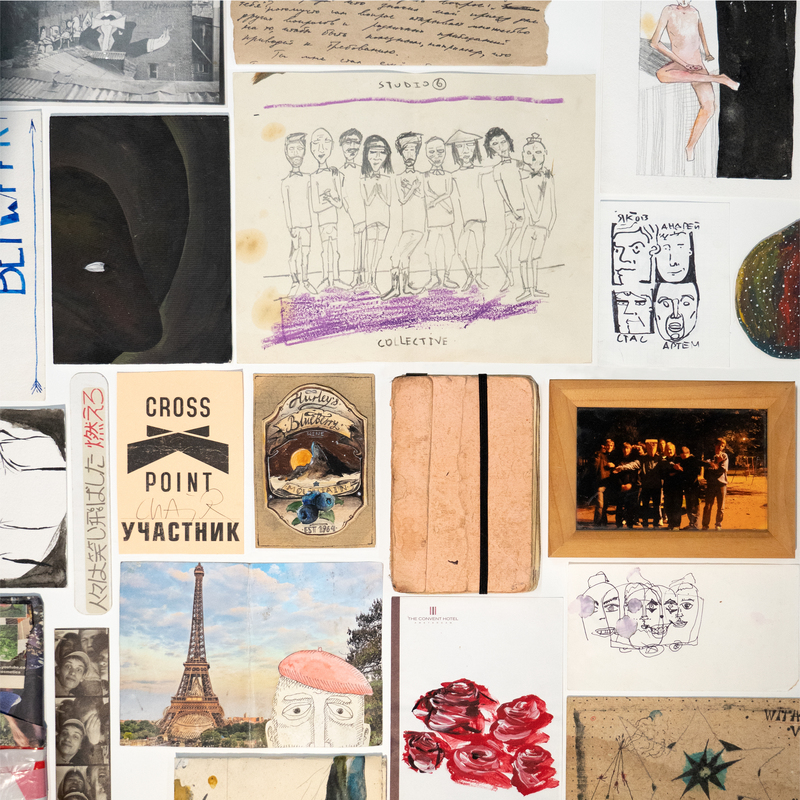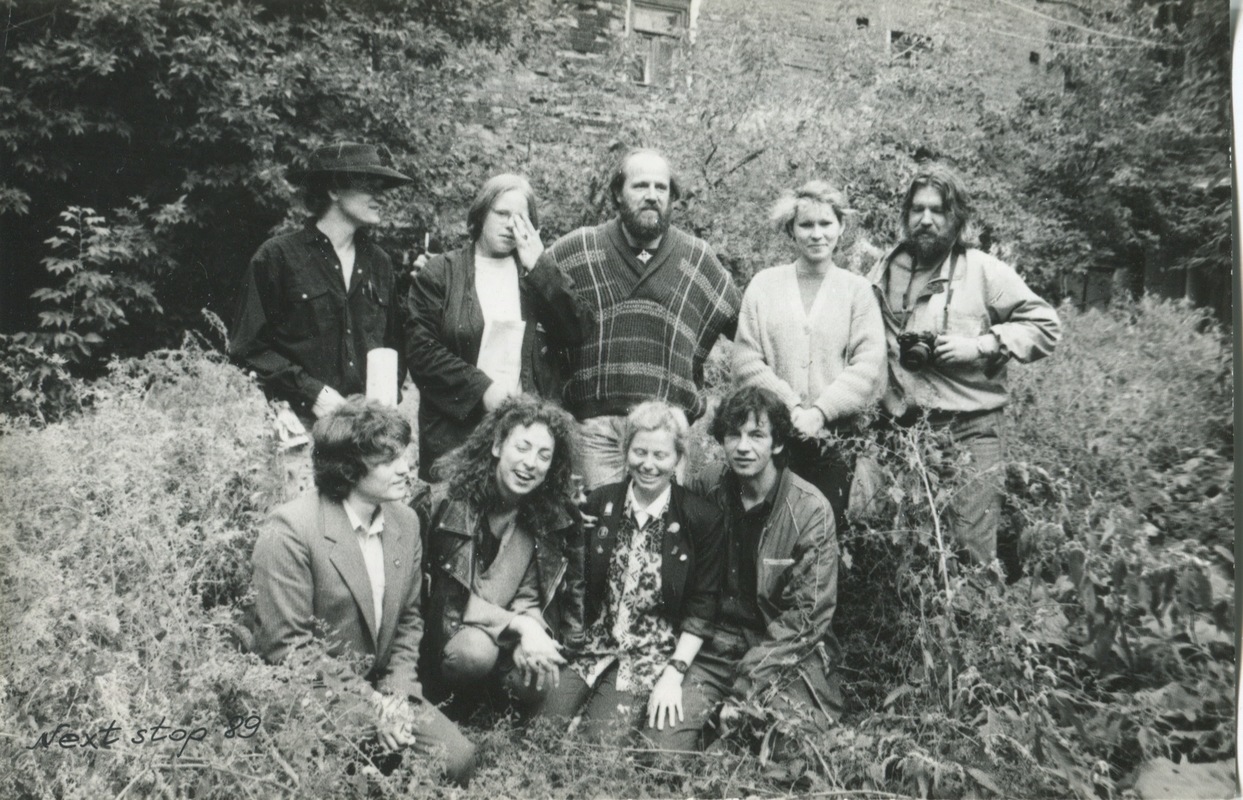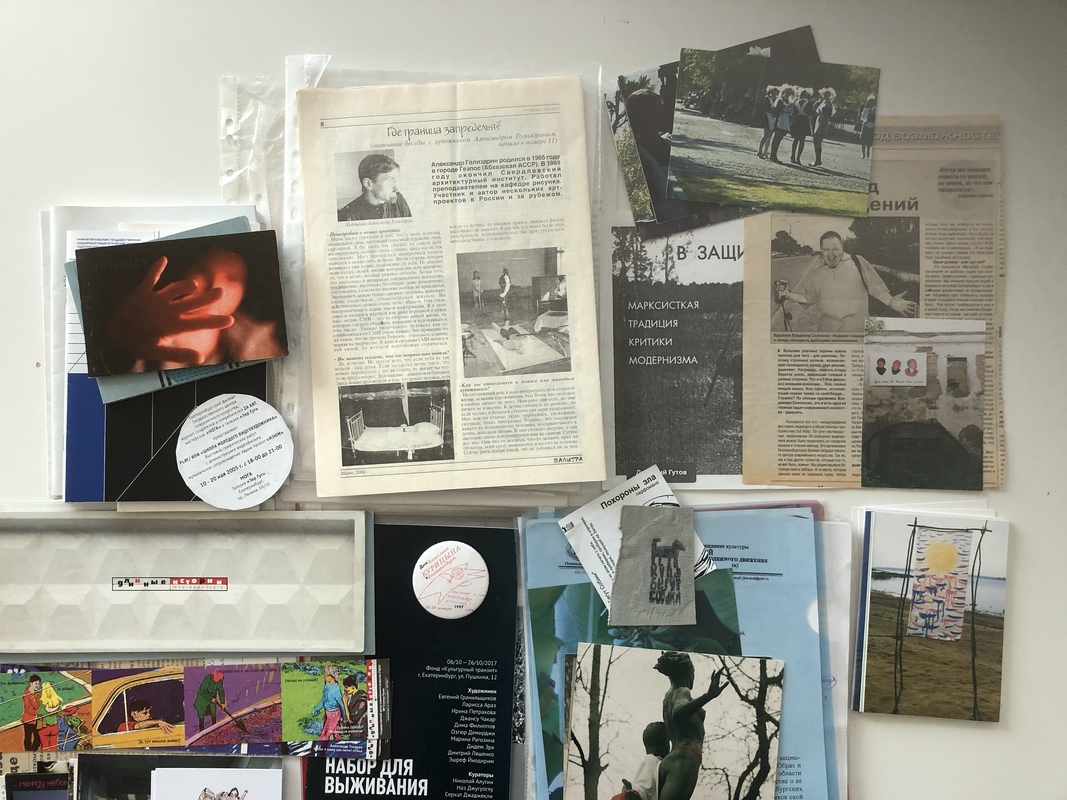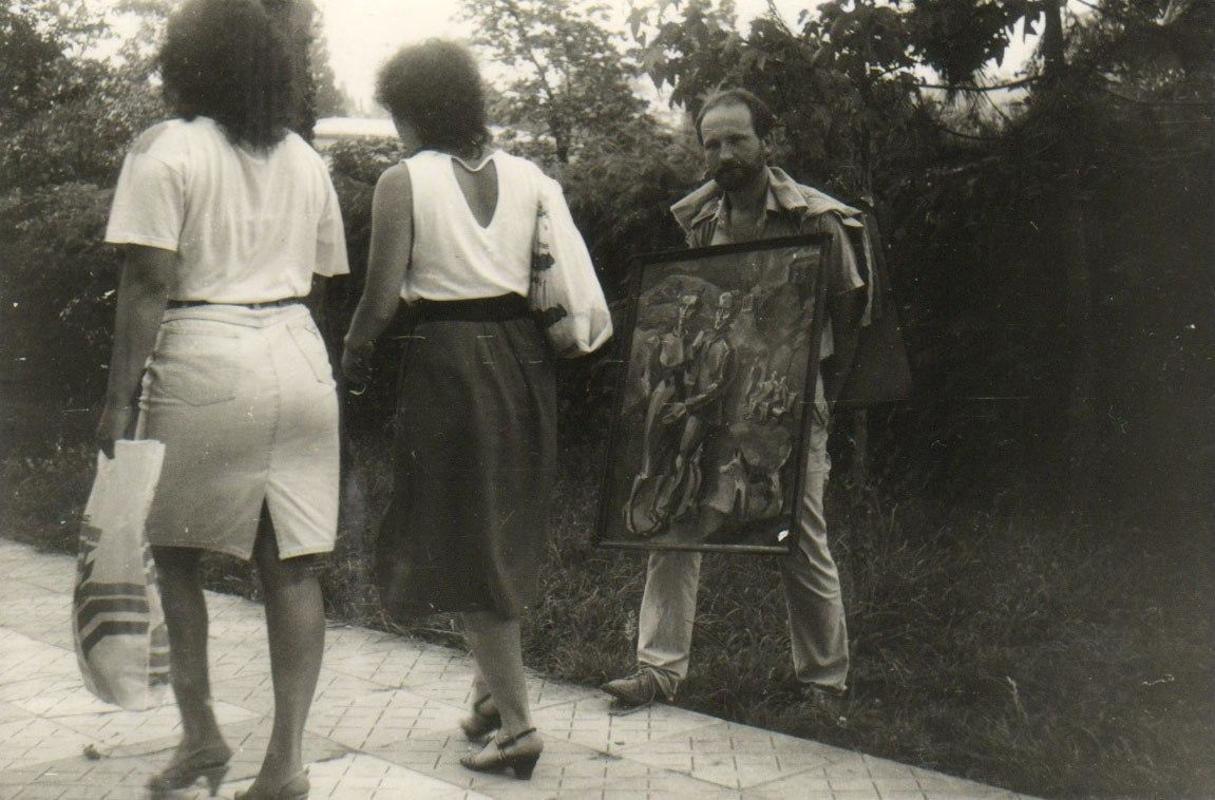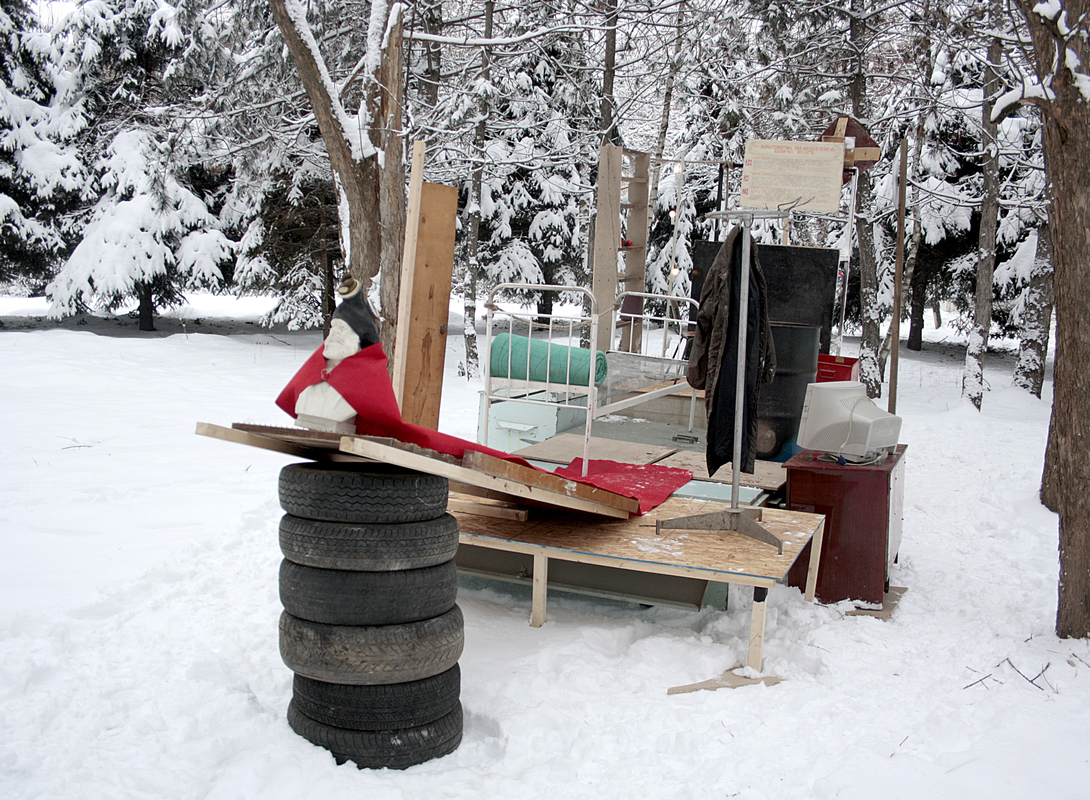Catalogue
Tantssoyuz Information and Research Center
- Andrei Korolenko Archive
- Kipling Dance Team Archive
Archive of Artistic Life in Zapolyarye
- Archive of the Art Scene in Apatity
Tomsk Contemporary Art Archive
- Tomsk Contemporary Art Archive
Archive of Voronezh Contemporary Art
- Archive of Voronezh Center for Contemporary Art
Belgorod Oblast Art Scene Archive
- Belgorod Oblast Art Scene Archive
- Belgorod Oblast Archive of Experimental Underground Music
Smolensk Archive: A Different Local History, Russia
- The Collection of Smolensk Archive: A Different Local History
The Pushkin State Museum of Fine Arts, Moscow, Russia
- Nikolai Nasedkin archive
- Documentation of Creative Projects by the Baltic Branch of the Pushkin State Museum of Fine Arts
- Documents of Pushkin State Museum of Fine Arts Projects
- Documentation of Creative Projects by the Siberian branch of the Pushkin State Museum of Fine Arts
- Leonid Bazhanov Collection
- Alexandra Mitlyanskaya Archive
- Maria Dreznina Archive
Tikhaya Studio, Nizhny Novgorod, Russia
- Tikhaya Studio Archive
Saratov Contemporary Art Archive
- The Saratov Contemporary Art Archive
Victoria Gallery, Samara, Russia
- Victoria gallery archive
Yeltsin Center
- Marina Sokolovskaya Archive
Centre for Culture CC19
- Centre for Culture CC19 Archive
Nizhniy Tagil State Museum of Fine Arts
- Nizhny Tagil Museum of Fine Arts Archive
- Nizhny Tagil Artists’ Foundation
Togliatti Museum of Fine Art, Russia
- Togliatti Museum of Fine Arts archive
Museum of contemporary art PERMM
- Museum of contemporary art “PERMM” foundation
Archive of Contemporary Art in Krasnodar Krai
- Archive of Contemporary Art in Krasnodar Krai
- Sochi Art Scene Archive
Garage Museum of Contemporary Art, Russia
- Street art archive
- Moscow Art Magazine archive
- Alexander Kamensky archive
- Alexei Shchusev archive (The Archive of the All-Russia Agricultural and Artisanal Industrial Exhibition)
- Andrei Remizov (Chirkov) Archive
- Boris Sveshnikov Archive
- Vadim Zakharov archive
- Vladimir Nemukhin Archive
- Vladimir Uflyand Archive
- Gennady Abramov Archive
- Georgy Kursanov Achive
- Ivan Sotnikov Archive
- Igor Mukhin Archive
- Igor Pyatkin archive
- Lena Popova Archive
- Lyalya Kuznetsova Archive
- Margarita Masterkova‑Tupitsynа and Viktor Agamov‑Tupitsyn archive
- Muza Yegorova (Yegorova-Troitskaya) archive
- Olga Danilkina archive
- Serge Sédrac archive
- Sofya Adlivankina Archive
- Francisco Infante-Arana Archive
- Archive of the Alternative Culture of the 1970s and 1980s
- Archive of the New Drama movement (1990–2010s)
- Archive of Evgenii Garkusha’s project I Am Not An Artist
- Archive of Prewar Soviet Periodical Literature About Japanese Contemporary Art
- Garage Video Documentation
- Garage Museum of Contemporary Art institutional archive
- Garage Interviews
- Sergei Gordeev Book Collection
- L Gallery archive
- Galeev Gallery Archive
- Art Projects Foundation archive
- Andrei Khlobystin archive
- Viktor Pivovarov archive
- Vladislav Mamyshev‑Monroe archive
- Vyacheslav Kuristyn library
- George Kiesewalter archive
- Elena Kovylina archive
- Igor Makarevich archive
- Igor Palmin archive
- Joseph Backstein archive
- Irina Aktuganova and Sergey Busov archive
- Leonid Talochkin archive
- Lyubov Gurevich Archive
- Mikhail Nazarov archive
- Garage Museum of Contemporary Art archive
- Garage Museum of Contemporary Art archive in St. Petersburg
- Natalia Ovsyannikova Archive
- Natalia Samkova archive
- Nina Zaretskaya (TV Gallery) archive
- Oleg Karavaichuk Archive
- Sergey Chubraev archive
- Stanislav Savitski archive
- Garage Center for Contemporary Culture
- Navicula Artis Gallery Archive
- Moscow Pallete Gallery archive
- Shkola Gallery archive
- Factory of Found Clothes Group/FFC archive
- Garage Interviews. Conversations with Artists, Curators, and Art Historians
- An Undying Flow of Ideas: Ephemera from Tryokhprudny Lane Gallery
- The Very Words. A Poetic Selection by Garage
- Trips Out of Town archive and MANI Buchgalterium Anthology
- Vasily Sitnikov archive
- Vladimir Alejnikov archive
- Vladimir Supik Archive
- Gogol Center Archive
- Archive of Sergey Borisov
- Meyerhold Center Archive
- Andrei Monastyrski's video diary
- Inclusive Practices in Culture
- The Artist's Book. Independent Publishing Practices. A Thematic Selection by Garage
- Anthologies of the Moscow Archive of New Art (MANI)
- Garage Museum of Contemporary Art Theater Archive
- XL Gallery archive
- Galina Smirnskaya Archive
- Gennady Prikhodko collection
- Institute of Contemporary Art and Moscow Biennale of Contemporary Art Archive
- Margarita Gromova archive
- Natalia Kamenetskaya archive
- Aidan Gallery archive
The Zimmerli Art Museum at Rutgers University, USA
- Moscow Archive of New Art
The Research Centre for East European Studies (Forschungsstelle Osteuropa), Germany
- Boris Groys and Natalya Nikitina archive
- Igor Golomshtok archive
- Collections
- Persons
- Keywords
- Type of entry
- Place
- Time span
RAAN Archives
RAAN brings together archive collections devoted to postwar Soviet art and Russian contemporary art. Garage Archive Collection contains materials from the Russian press, the archives of Moscow’s first private galleries, and the personal archives of artists, collectors, and curators. The collection of the Zimmerli Art Museum includes several archives on Soviet nonconformist art collected by Norton and Nancy Dodge. The Bremen archive features materials from and about artists who emigrated from the Soviet Union.
At present, most of the archive’s catalogue is in Russian.
Garage Museum of Contemporary Art, Russia
Garage Archive Collection is a center for the study of Russian contemporary art in an international context. The collection is continually developing thanks to gifts and acquisitions, including materials from galleries, the personal archives of artists and collectors, and the findings of Museum staff.
The Research Centre for East European Studies (Forschungsstelle Osteuropa), Germany
Over 600 personal archives, including those of Soviet Nonconformist artists, writers, and poets, provide insight into informal artistic circles in the Soviet Union and place them within the context of the international art scene from the 1950s to the 1980s.
The Zimmerli Art Museum at Rutgers University, USA
The collection illuminates a variety of unofficial artistic activities in Moscow, St. Petersburg (Leningrad), and the former Soviet Republics, providing insight into the personal, social, and institutional conditions under which the artists worked
Centre for Culture CC19
CC19 Center for Culture is a contemporary art institution in Novosibirsk, founded in 2019 on the site of the former City Center of Visual Arts. CC19 reflects on the cultural processes of the present in dialogue with the public and local communities through its exhibition, educational, and musical programs. Through its curatorial projects, CC19 invites the audience to see art as part of social relations and to think of exhibitions as a place for dialogue where new ideas can be born. CC19 seeks to work with the Siberian art scene and in partnership with Russian and international organizations to “ground” art in the local context.
Saratov Contemporary Art Archive
The archive aims to identify and present the main stages of the development of contemporary art in Saratov from the late 1980s to the present. The collection has been built thanks to the efforts of art historians Natalya Koptel and Natalya Kurilova and to artists and curators who have donated their materials. It comprises various types of documents, from biographical information and ephemera to photographs and videos.
Archive of Voronezh Contemporary Art
The Archive of Voronezh Contemporary Art was founded in 2009 by the artists, curators, and art researchers from the group POPPI, as well as by Nikolay Alekseev and Tatyana Danilevskaya. The archive collects, organizes, and analyzes materials about the development of contemporary art in Voronezh since the late 1960s.
The Pushkin State Museum of Fine Arts, Moscow, Russia
The Pushkin State Museum of Fine Arts is a museum complex with one of the largest foreign art collections in Russia. The museum collection contains about 700 thousand original works created by artists of different epochs, from ancient Egypt and ancient Greece to the present day.
Tomsk Contemporary Art Archive
The aim of the archive is to collect and systematize information about artists born after 1980 who emerged in the period 2000–2020s. It is constructed around people who worked actively within that period and influenced the development of contemporary art in Tomsk.
Archive of Artistic Life in Zapolyarye
The Archive of Artistic Life in Zapolyarye is an independent project which archives contemporary art in Murmansk Oblast. At present it covers the period from the mid‑1970s to the end of the 2000s.
Victoria Gallery, Samara, Russia
Victoria Gallery is the city’s largest independent art platform and aims to develop the cultural environment and support contemporary art in the region, introducing works by the best twentieth- and twenty‑first‑century artists and the most compelling trends in contemporary art.
Belgorod Oblast Art Scene Archive
An independent project by artist and curator Victor Zhdanov has been gathering and preserving materials on contemporary culture in Belgorod, Stary Oskol, and Gubkin since the 2000s, and currently comprises two audiovisual archives.
Nizhniy Tagil State Museum of Fine Arts
On September 30, 1944, the Regional Picture Gallery opened in the building of the former Pervomaisky Club in Nizhny Tagil and was renamed the Nizhny Tagil State Museum of Fine Arts in 1945. The museum’s collection is based on works of Russian art of the eighteenth to mid-twentieth centuries, donated from the collections of the Department of Arts under the Council of People’s Commissars of the RSFSR, the State Russian Museum, the State Tretyakov Gallery, and Nizhny Tagil’s Local Lore Museum.
Smolensk Archive: A Different Local History, Russia
Smolensk Archive: A Different Local History is an independent project to archive Smolensk’s contemporary art, incorporating a website and exhibition, publishing, and research initiatives reconstructing the history of Smolensk art. The project was founded in 2020 by Yana Dvoenko, curator of Dom Molodezhi Gallery. After the gallery closed as a result of the first wave of Covid, work on the archive continued thanks to curators, researchers, and artists.

Togliatti Museum of Fine Art, Russia
Togliatti Museum of Fine Art aims to consolidate its collection of contemporary art of the twentieth and twenty-first centuries and to preserve its existing holdings of postwar art, namely Soviet art of the 1970s and 1980s and Russian art of the 1990s. The basis of the collection are works which were donated to the museum by the Directorate of Exhibitions of the Union of Artists of the USSR and the Republican Center for Art Exhibitions and Promotion of Fine Arts of the Ministry of Culture of the RSFSR. Today, the collection is supplemented thanks to gifts from artists.
Tikhaya Studio, Nizhny Novgorod, Russia
Tikhaya Studio is a new type of institution, where artists’ studios become a place for friends to meet, an exhibition space, and a research center. Launched in 2015 in Nizhny Novgorod as a working space for artists, over time Tikhaya was transformed into a full‑scale institution and a point of attraction for city residents and visitors. At the heart of the studio’s activity is a self‑organization of resident artists and their co‑thinkers, who work together on developing the art scene in the city.
Tantssoyuz Information and Research Center
Tantssoyuz [Dance Union] Information and Research Center is an archive of Russian contemporary dance that has existed at the Innovative Cultural Center of Kaluga since 2023. The archive gathers, processes, stores, and spreads information on Russian dance collectives and projects that have submitted information about themselves.

Museum of contemporary art PERMM
Perm Museum of Contemporary Art (PERMM) was founded in 2009 by gallerist Marat Guelman, with the support of Perm Krai governor Oleg Chirkunov and senator Sergei Gordeev. For its first five years the museum was located in the former river terminal building in the historical center of the city. In summer 2014, it moved into a new building in the industrial area of Motovilikha. Initially, the museum was a central element of a major regional program to transform Perm’s cultural life through a new cultural policy, which was known colloquially as the Perm Cultural Revolution.
Yeltsin Center
The key mission of Yeltsin Center (Boris Yeltsin Presidential Center) is to preserve, study, and interpret the historical legacy of the former president of Russia Boris Yeltsin in the context of the political and social events of the 1990s.
Archive of Contemporary Art in Krasnodar Krai
The Archive of Contemporary Art in Krasnodar Krai was founded in Krasnodar in 2019 by the artists of ZIP Group (Evegny Rimkevich, Vasily Subbotin, Stepan Subbotin) and the researchers and curators Elena Ishchenko and Marianna Kruchinski. The archive team aims to collect and systematize information about the processes linked to the development of contemporary art in the region since the 1970s. Most of the material covers the period from 2000 to 2020.

